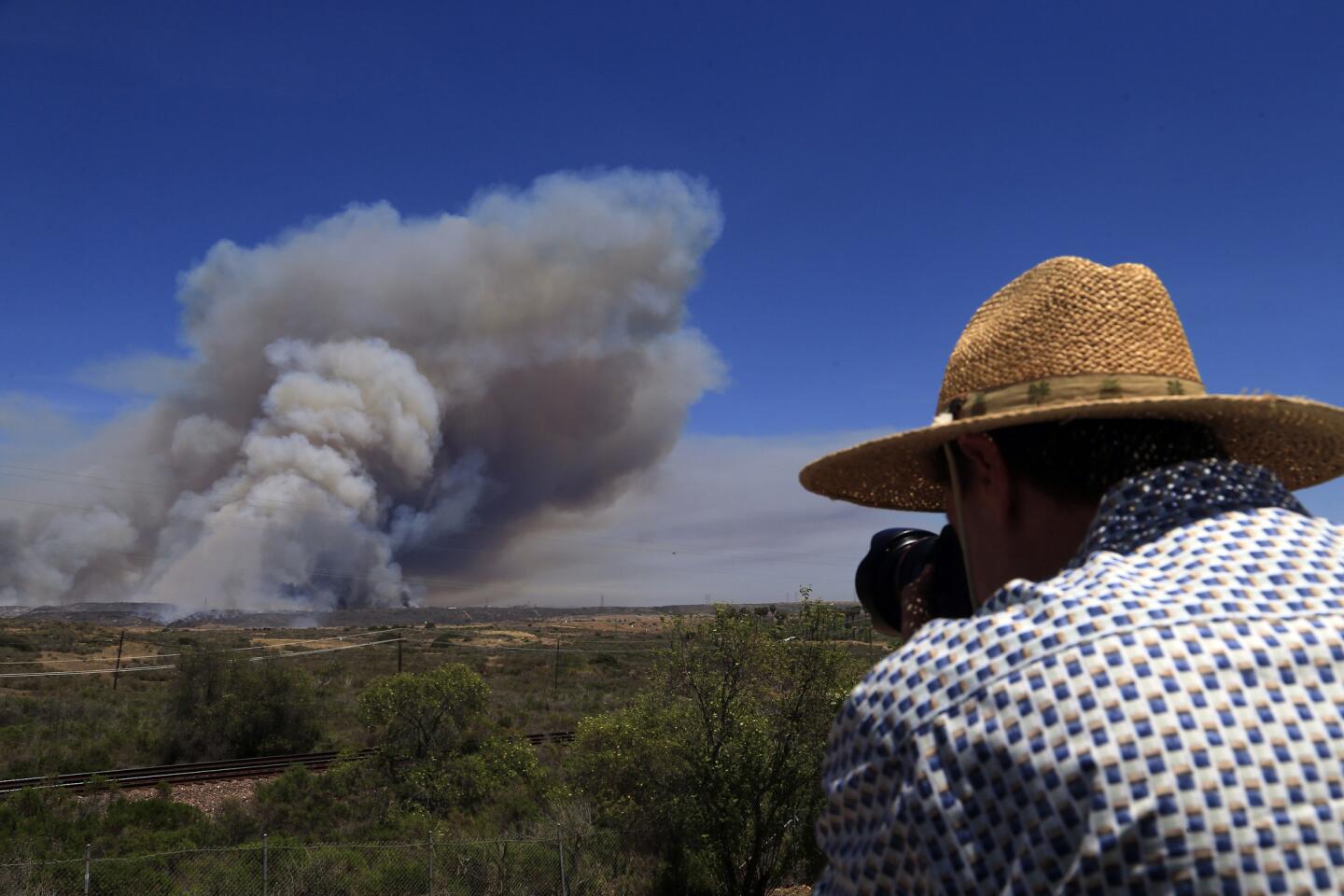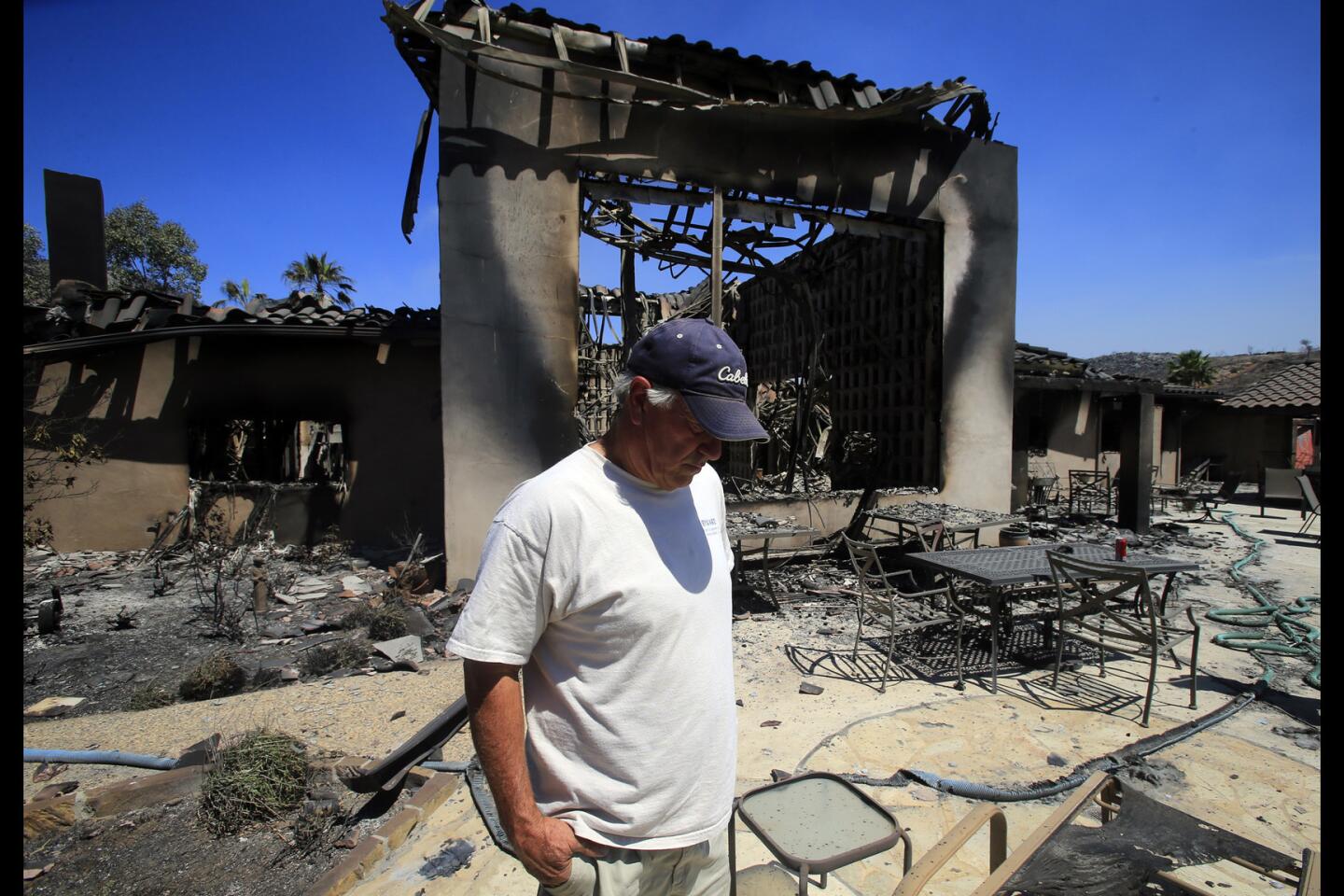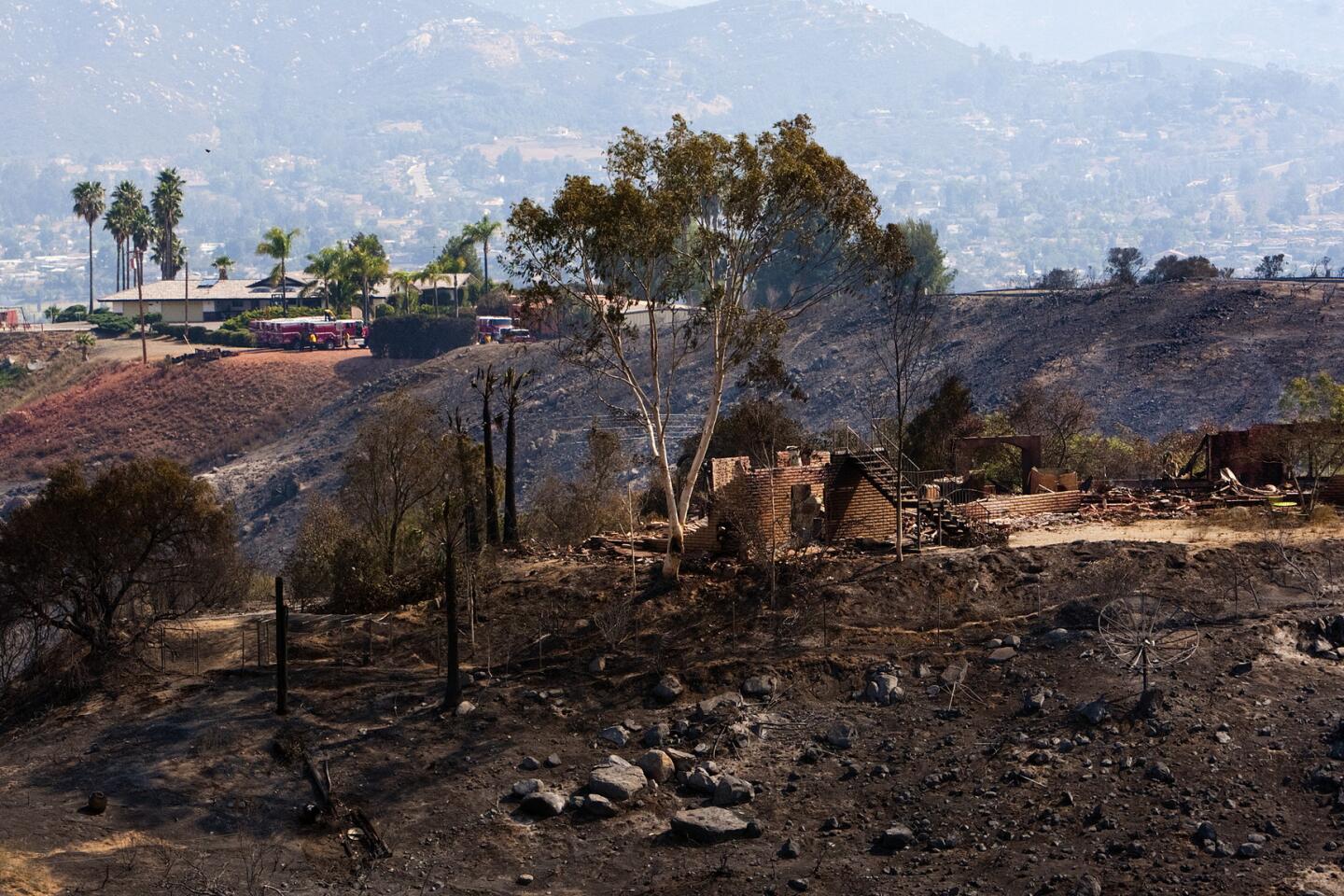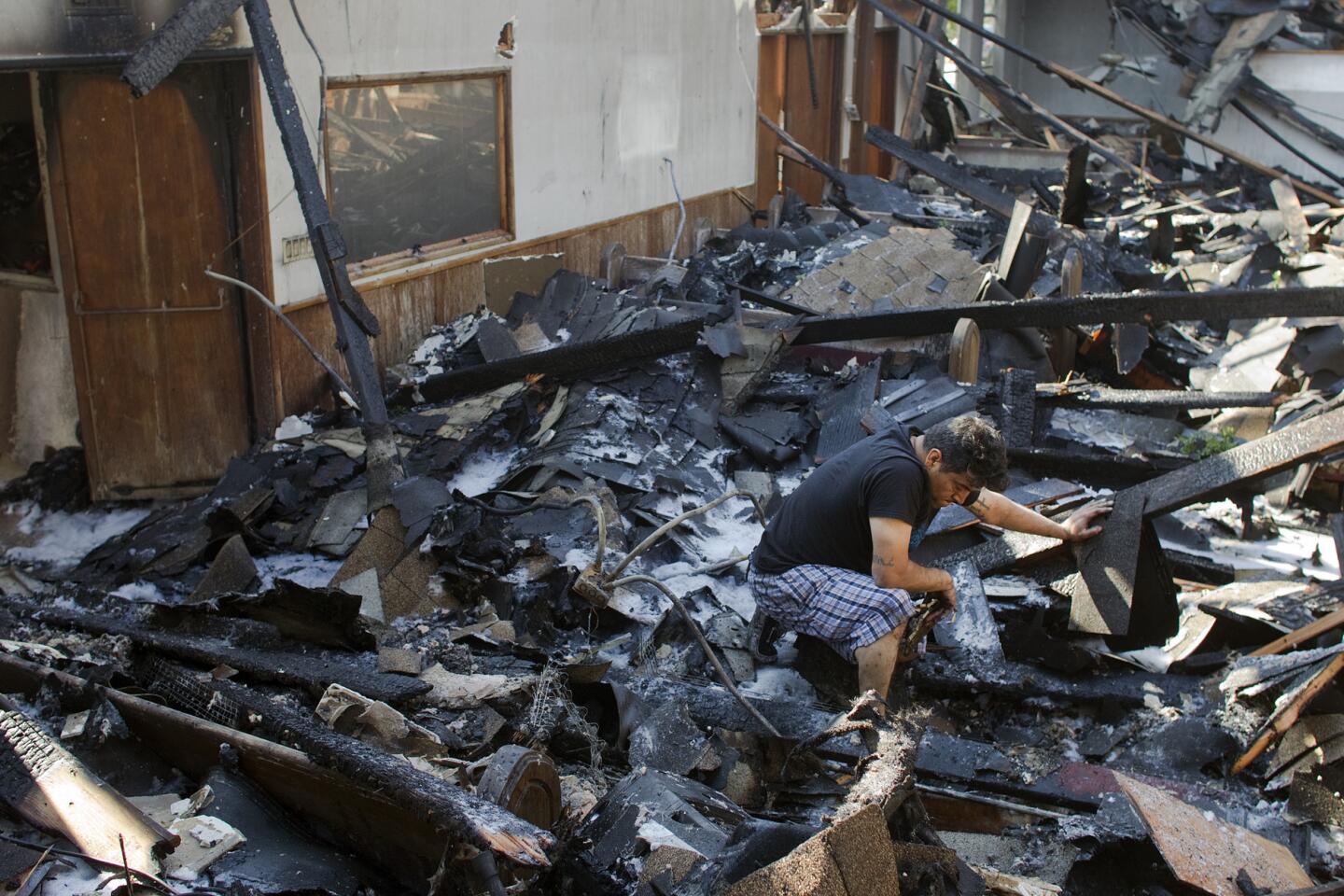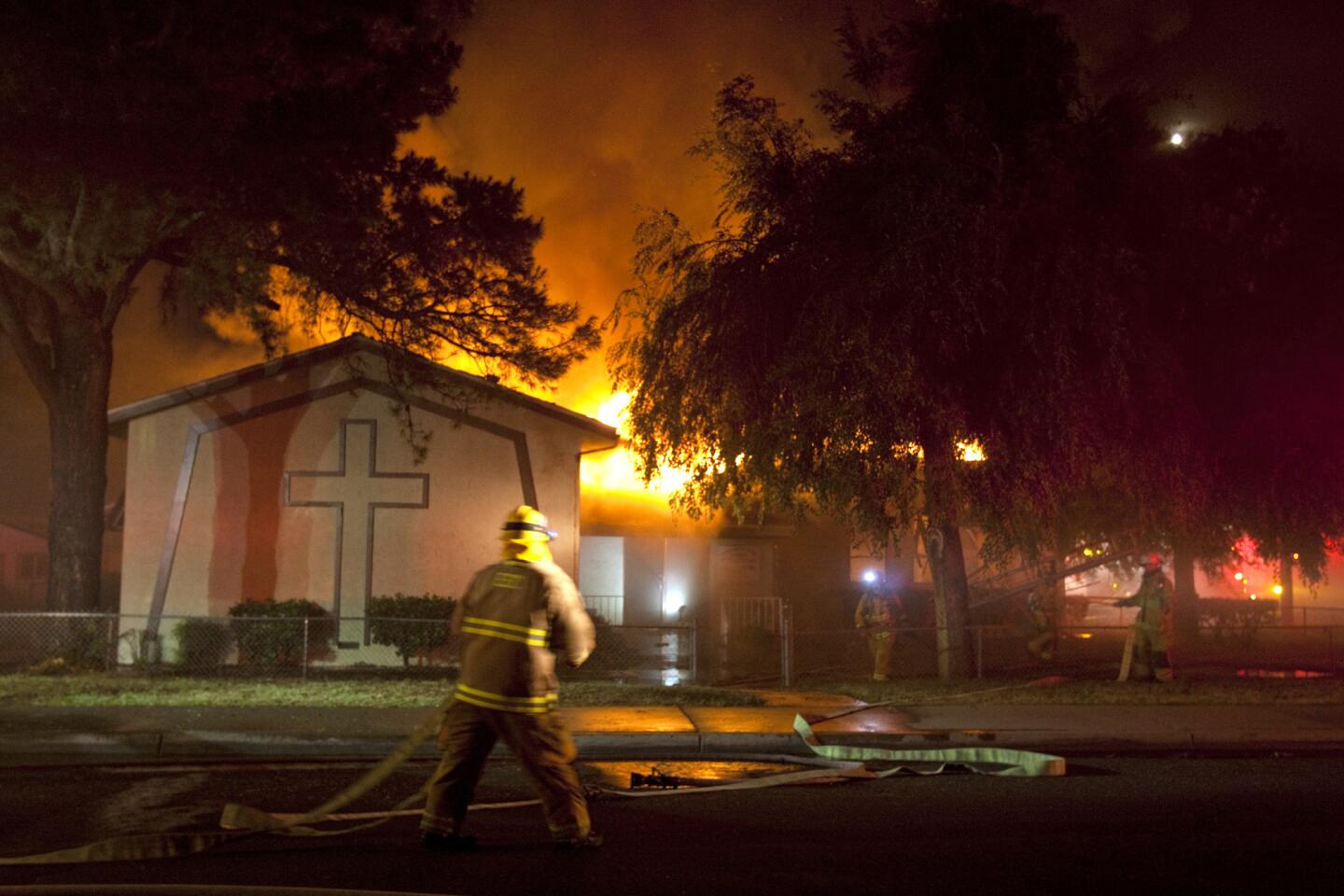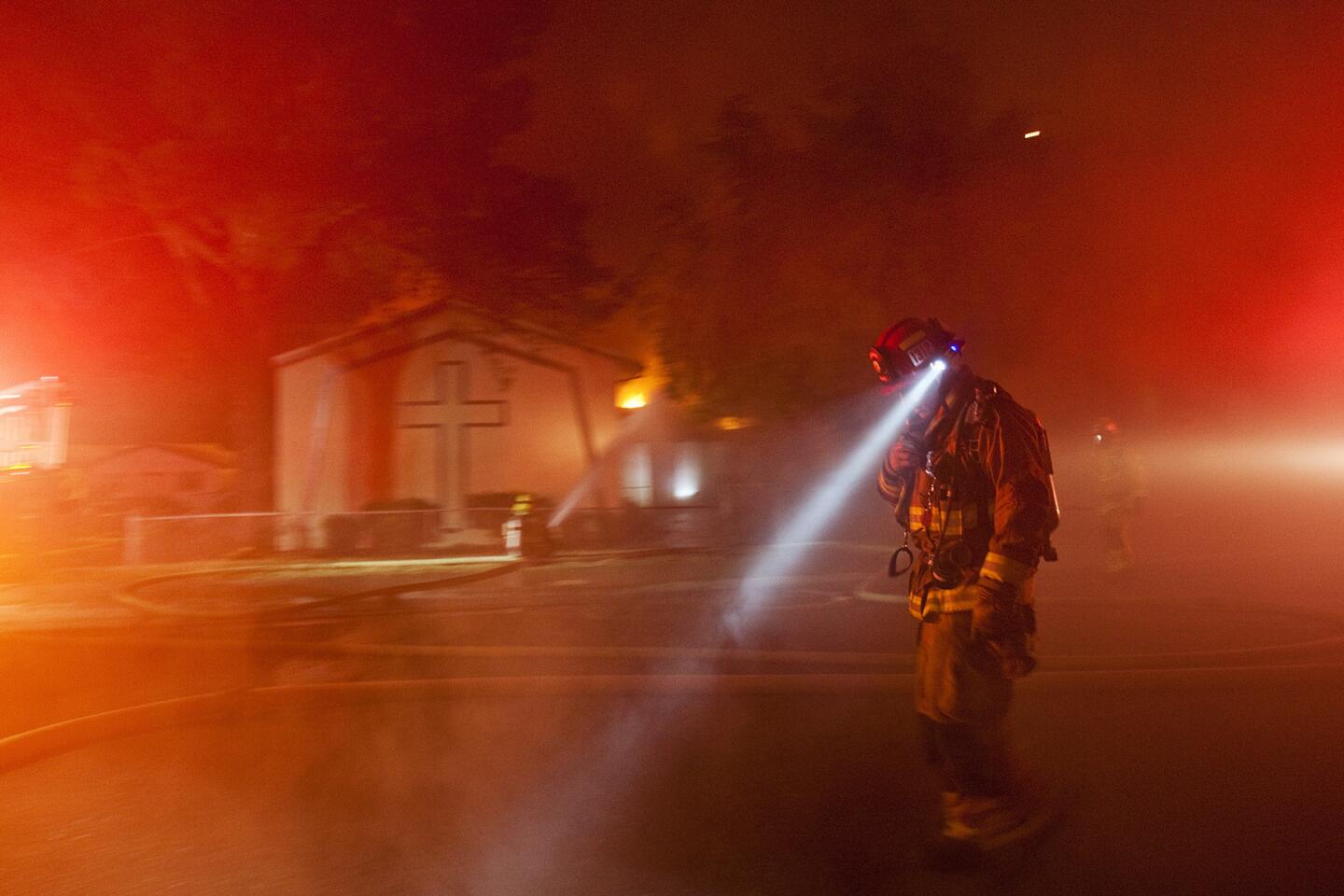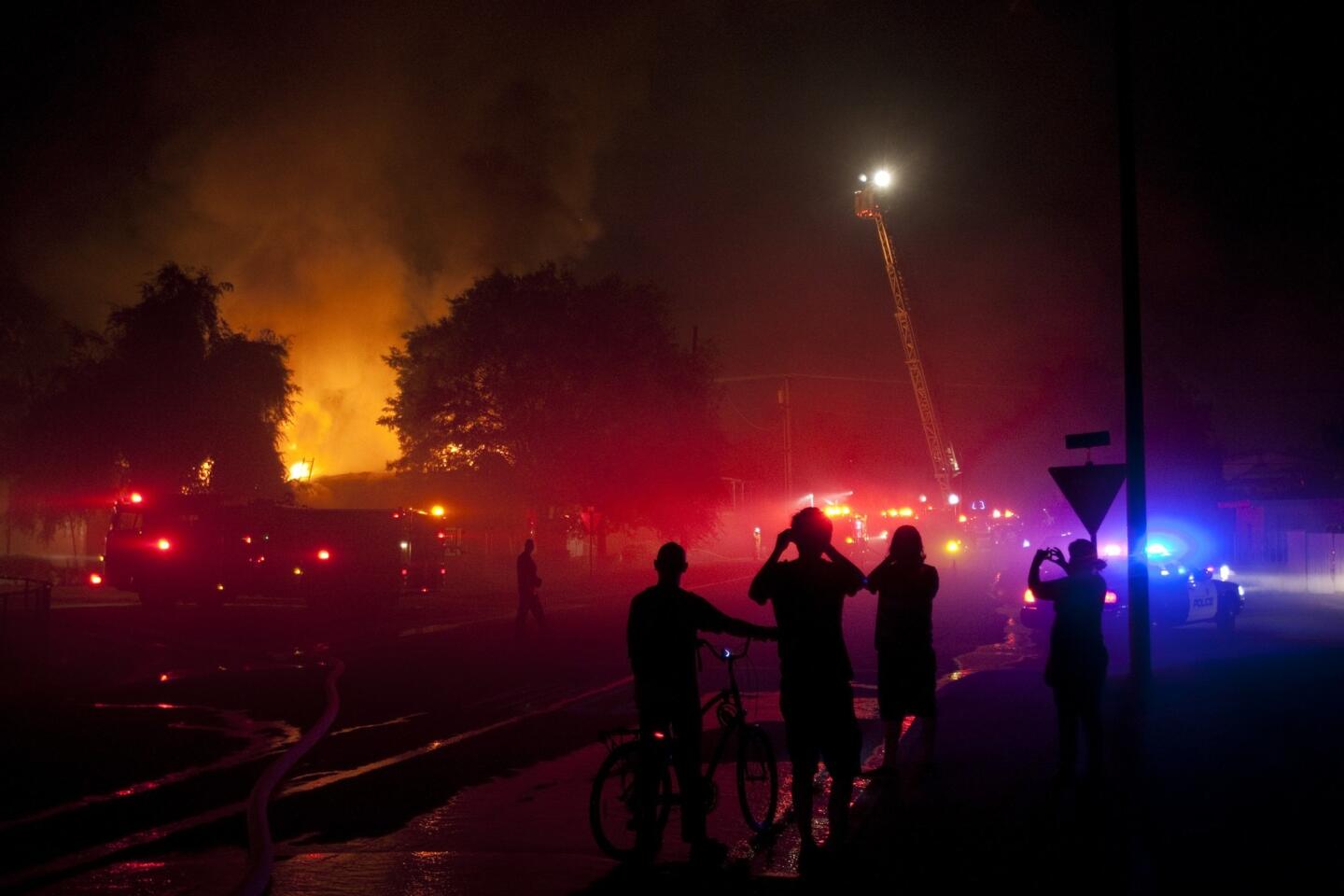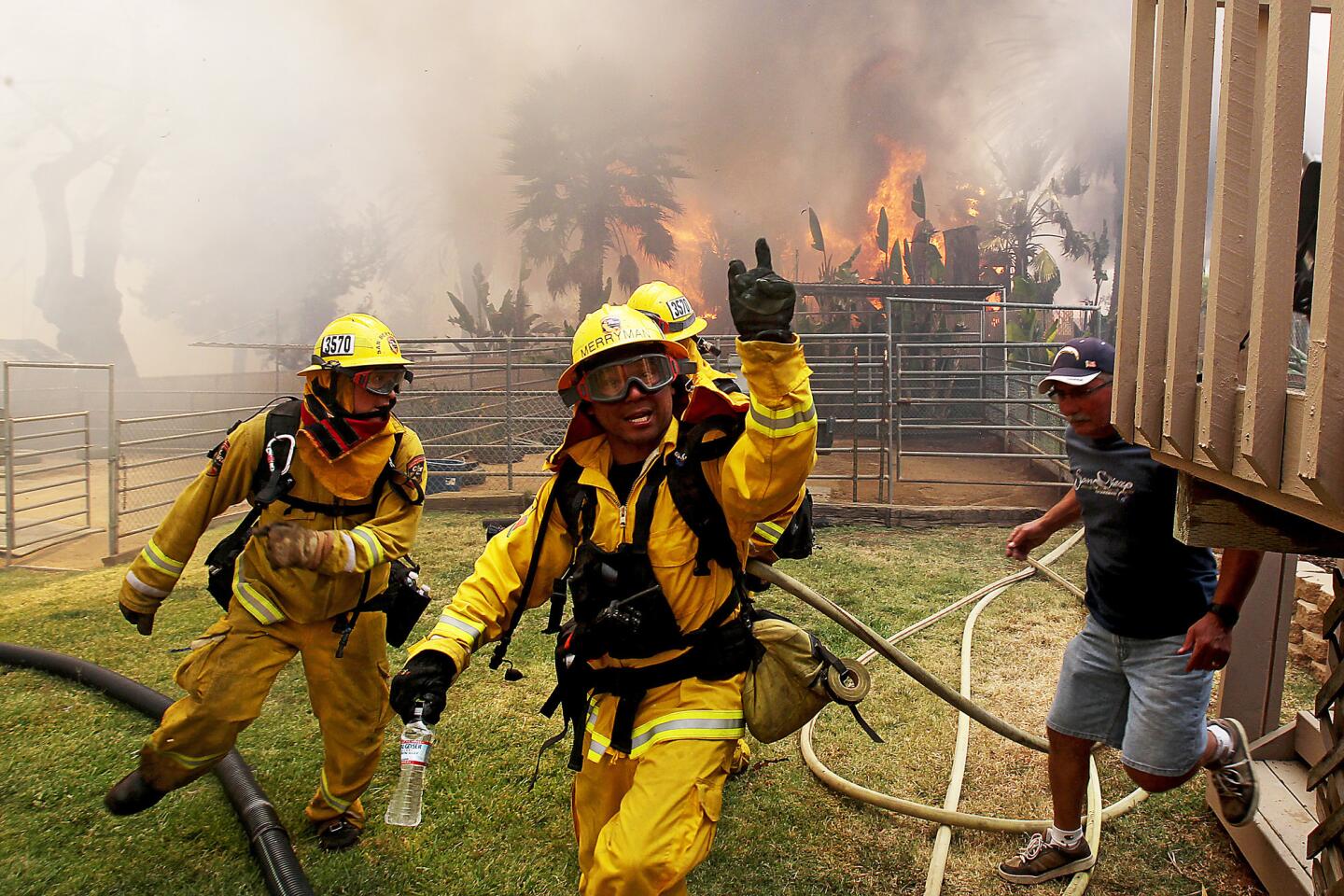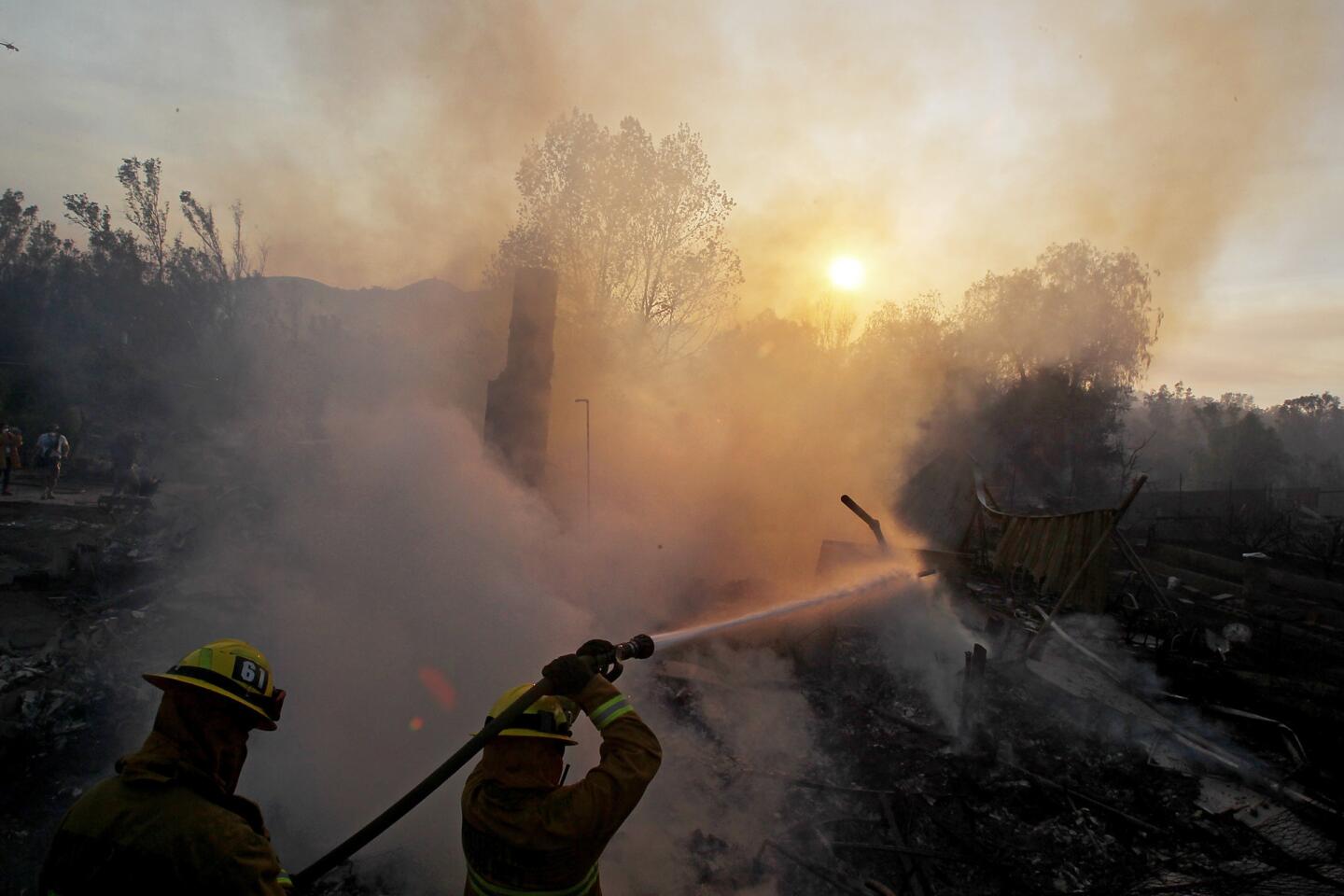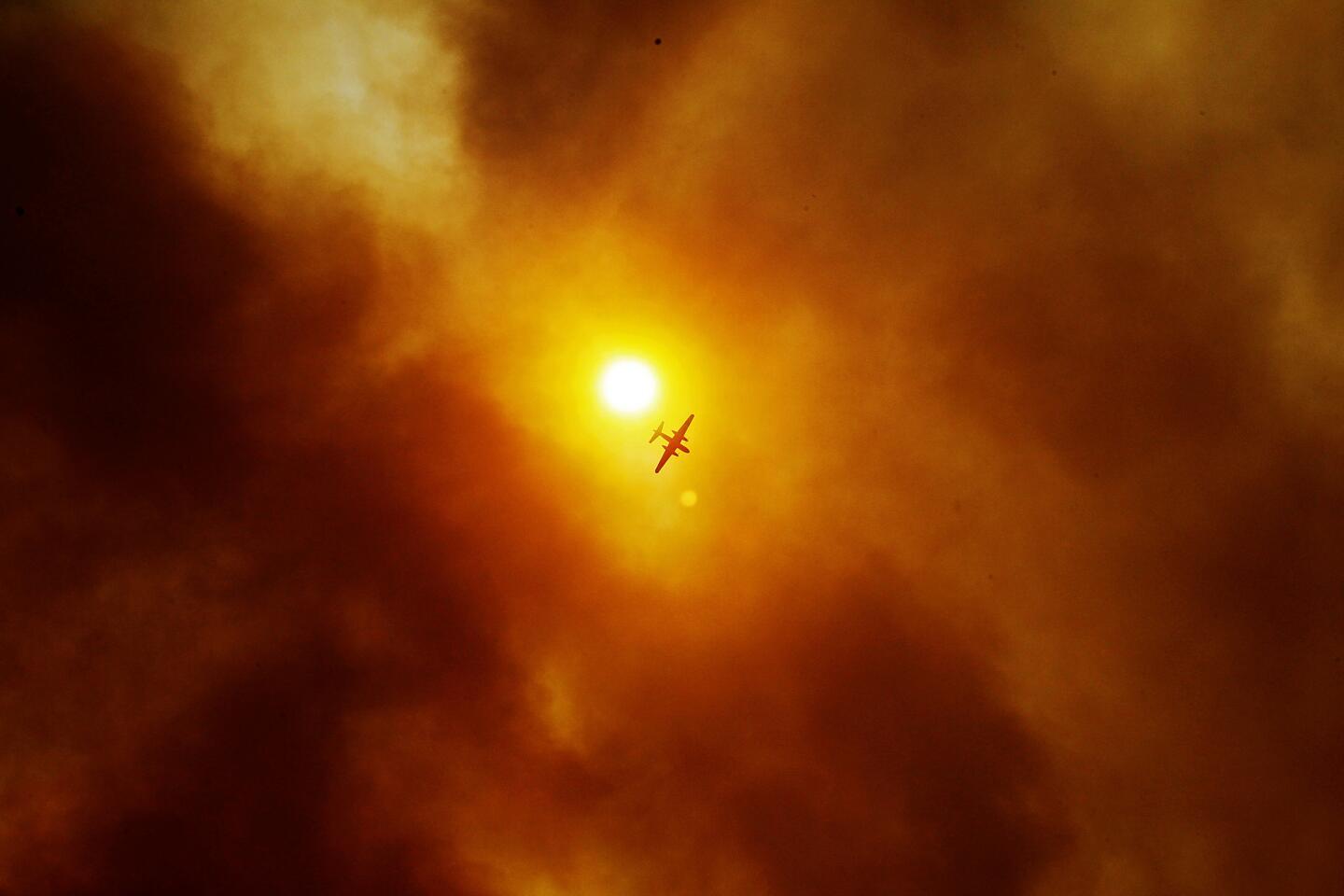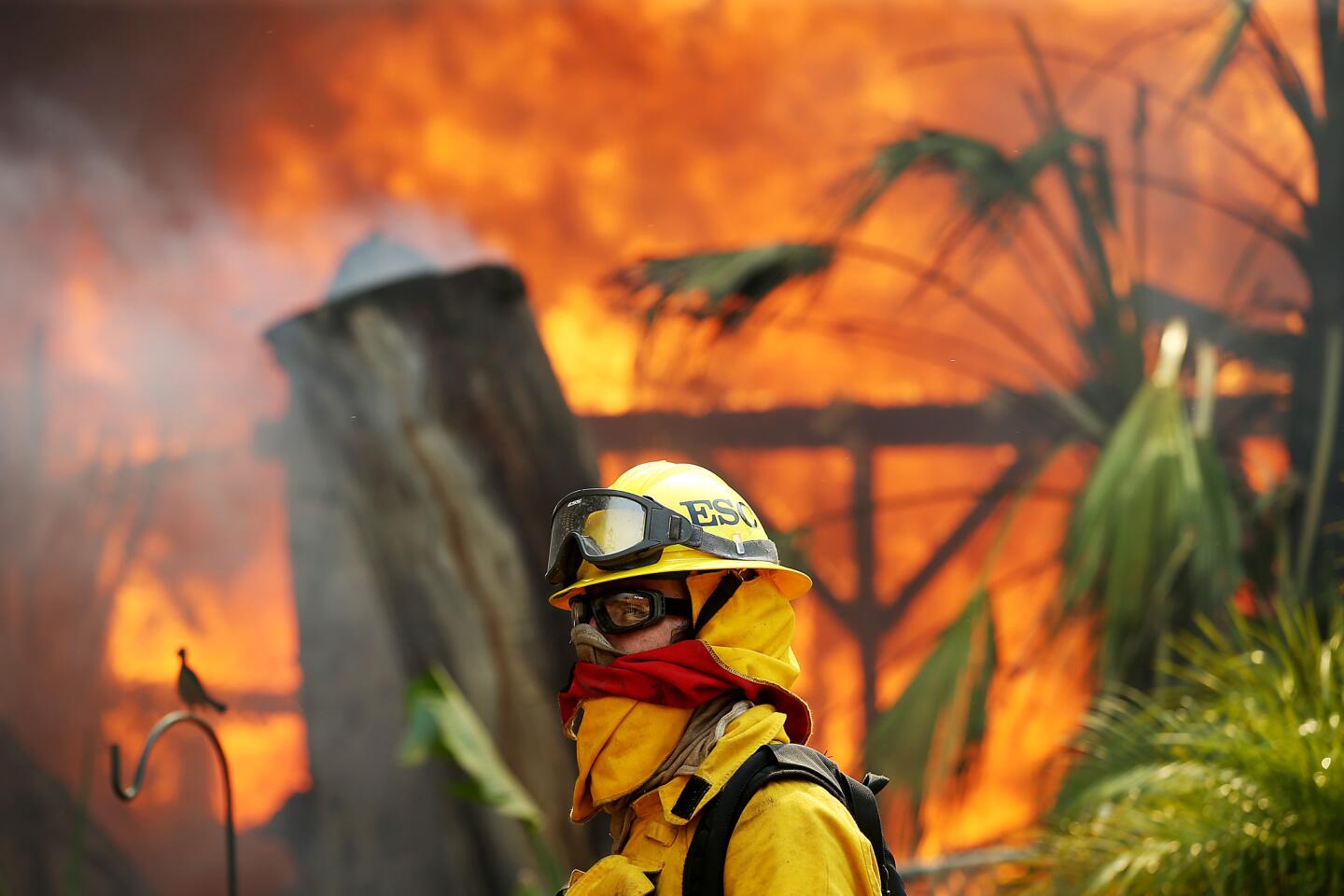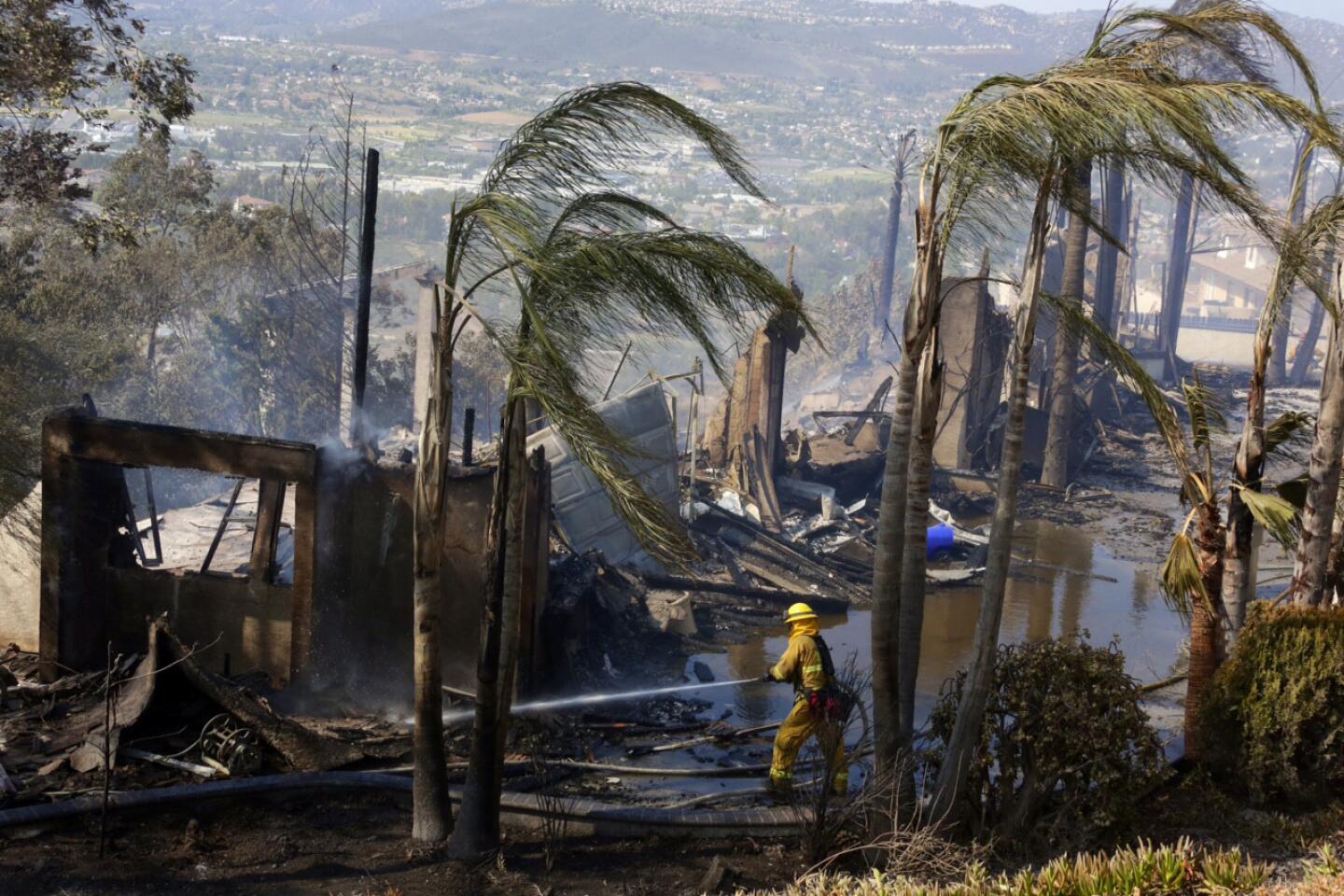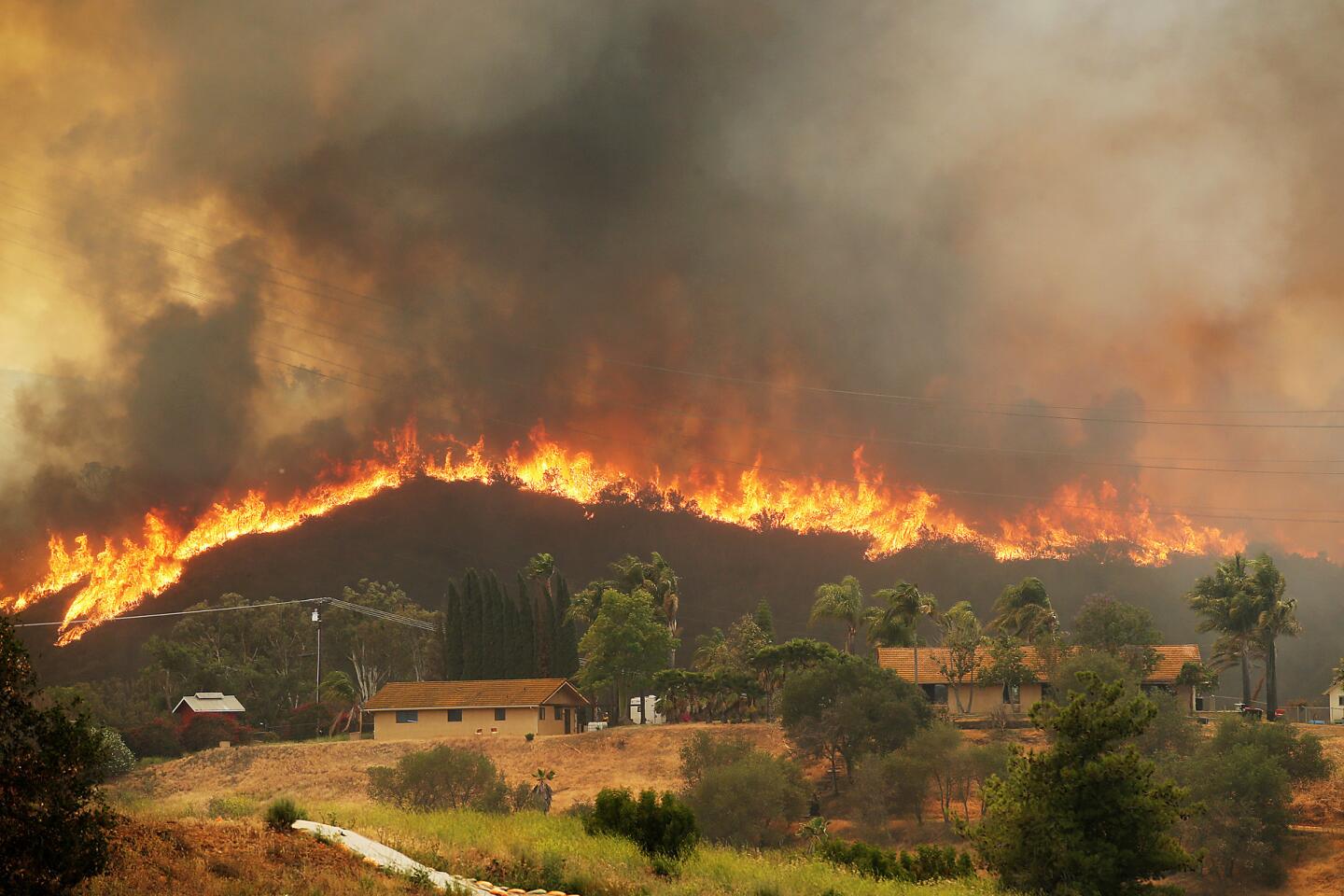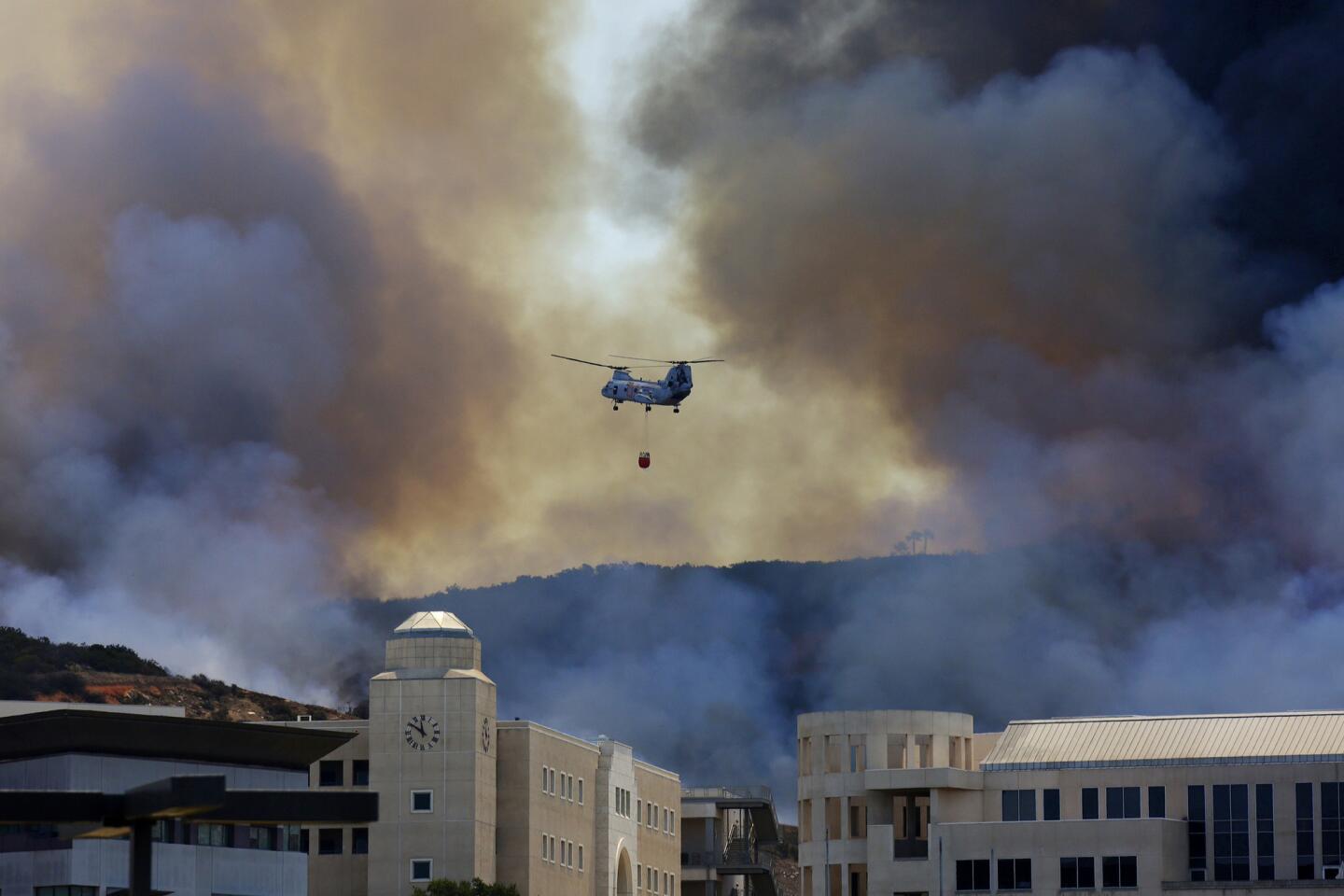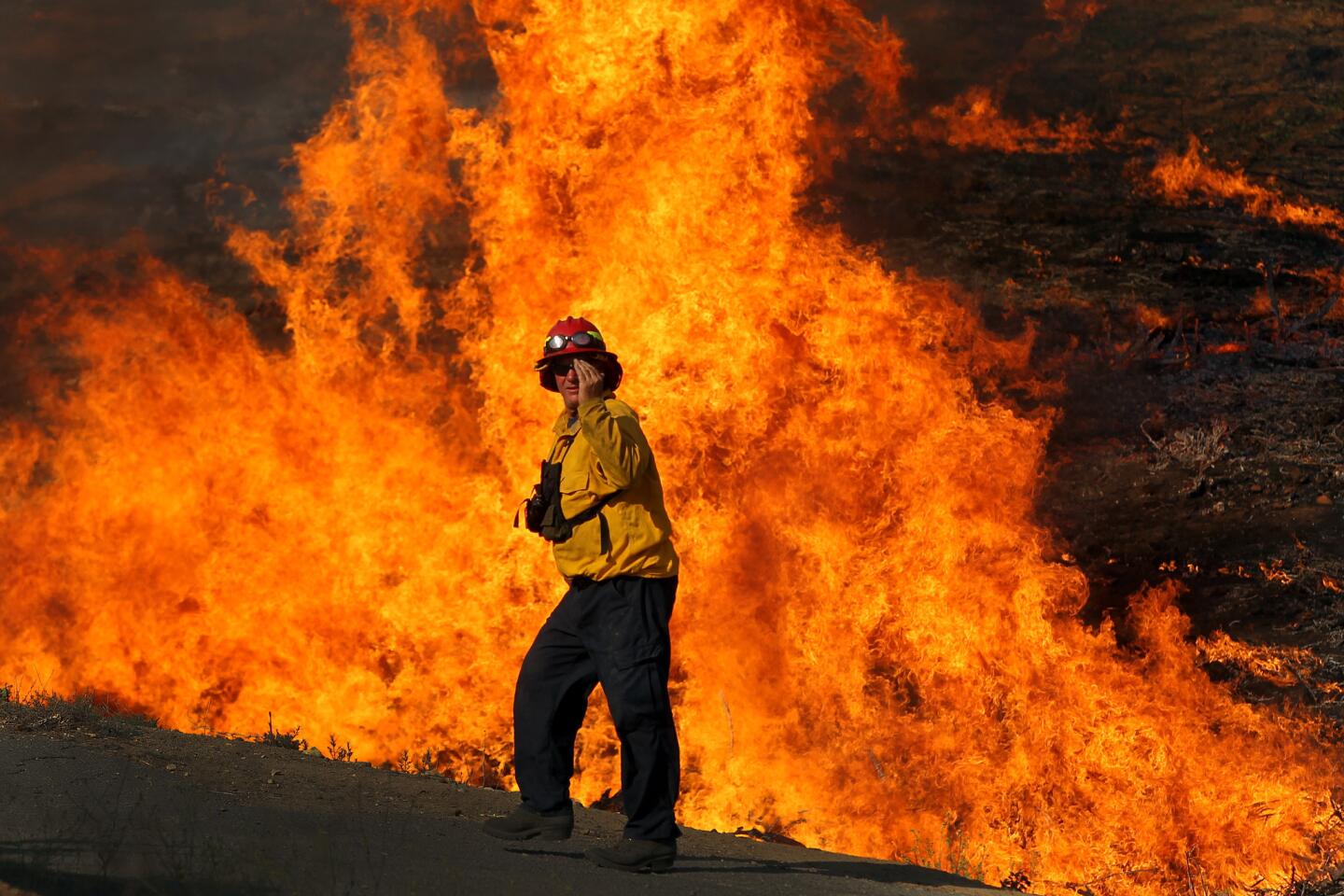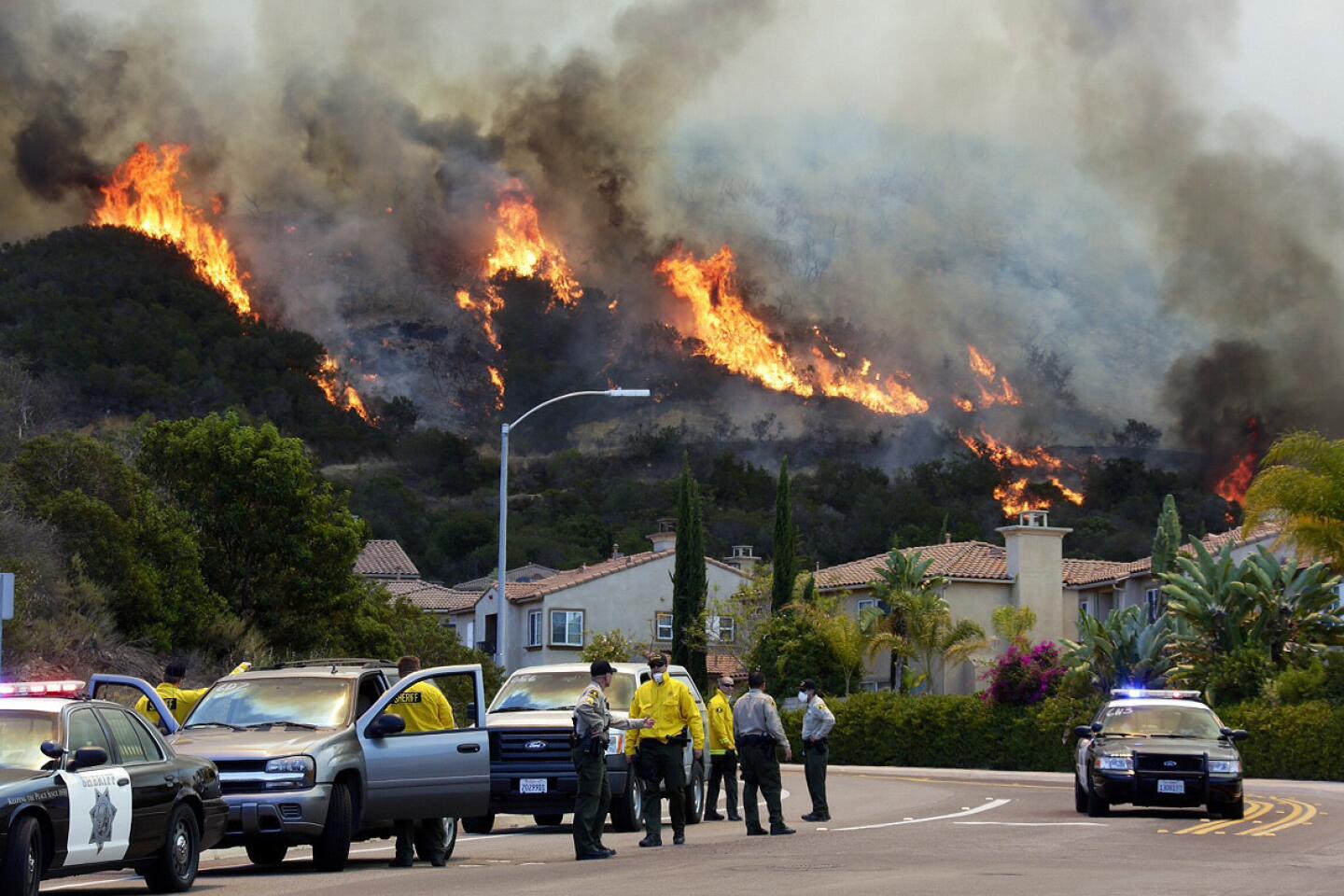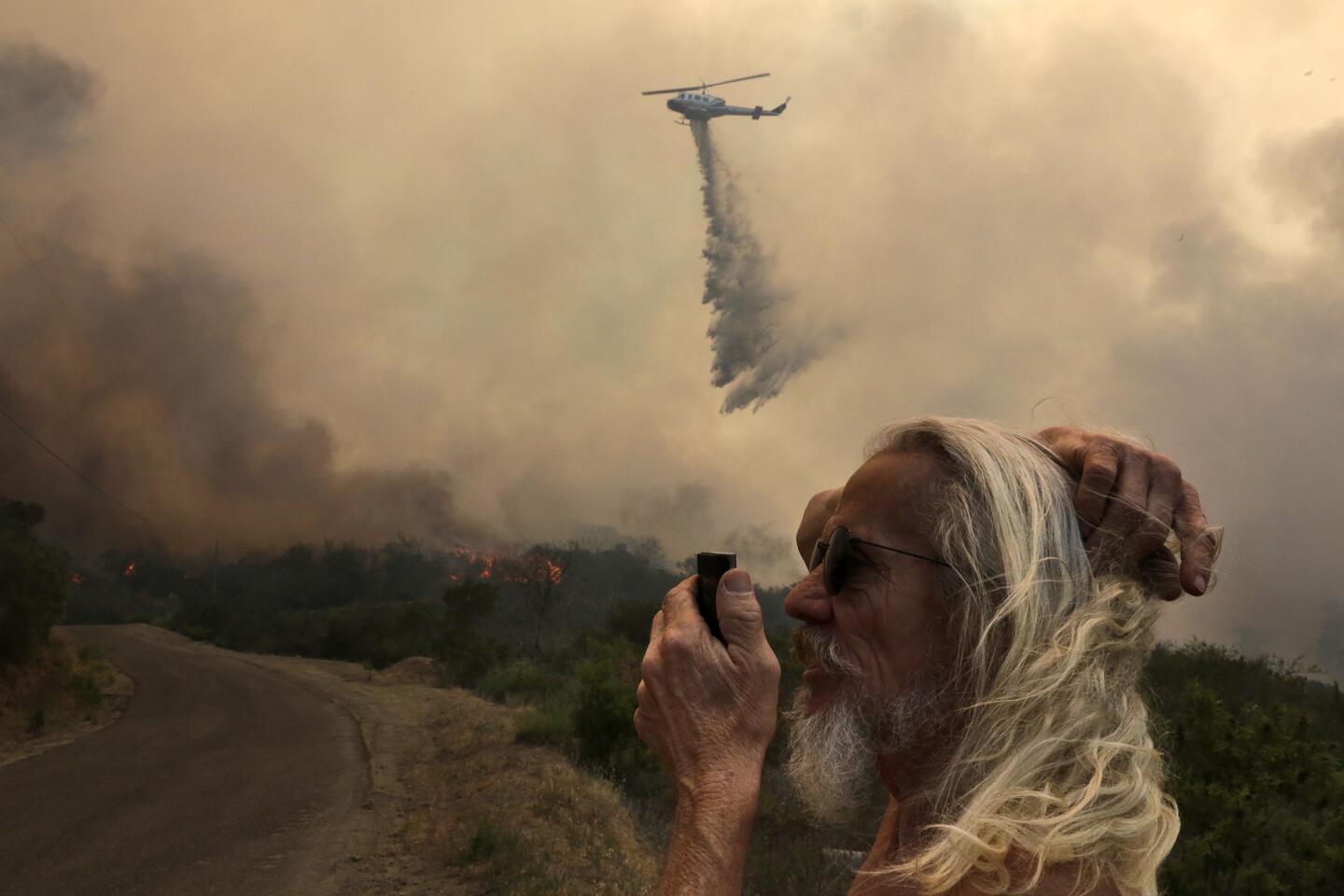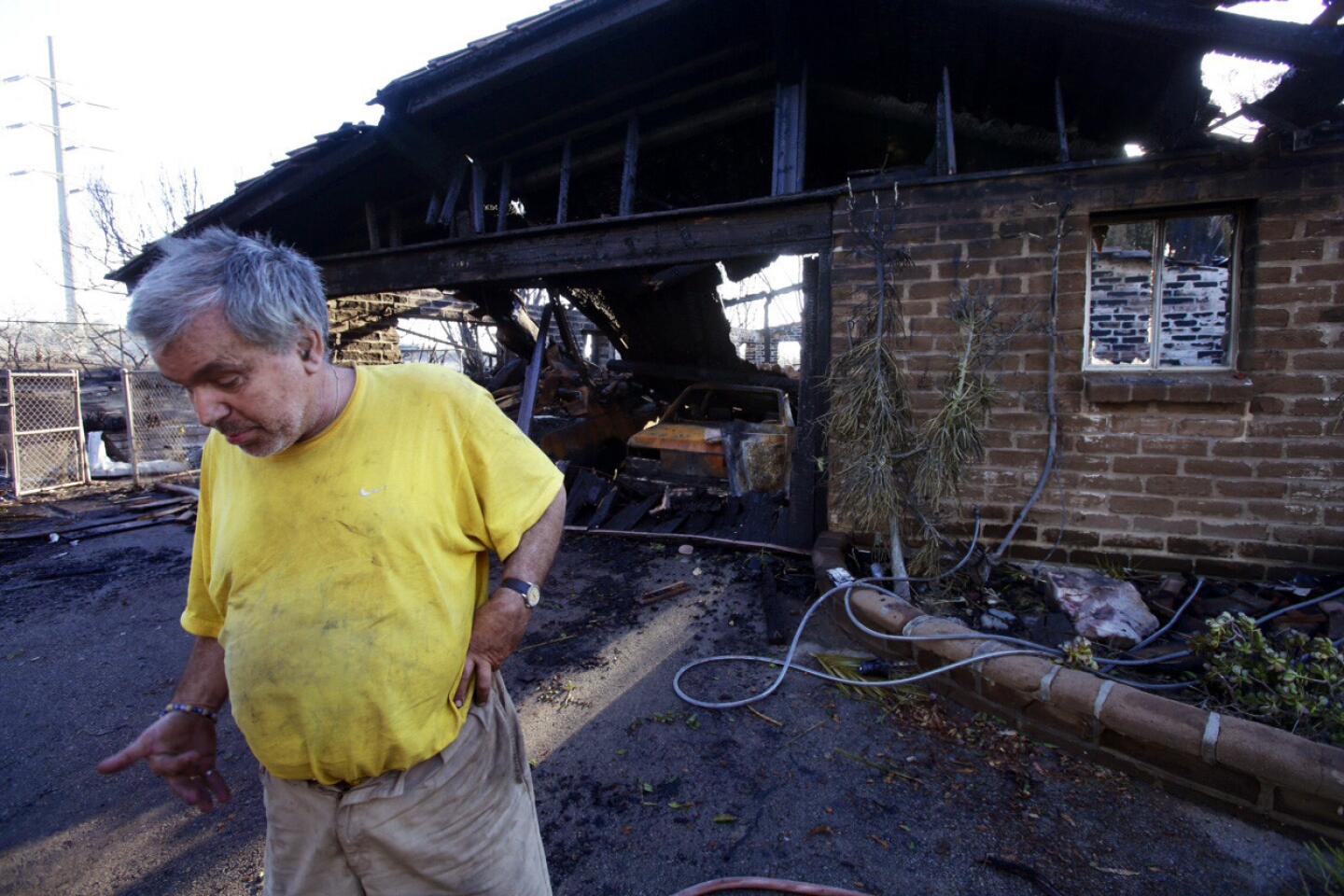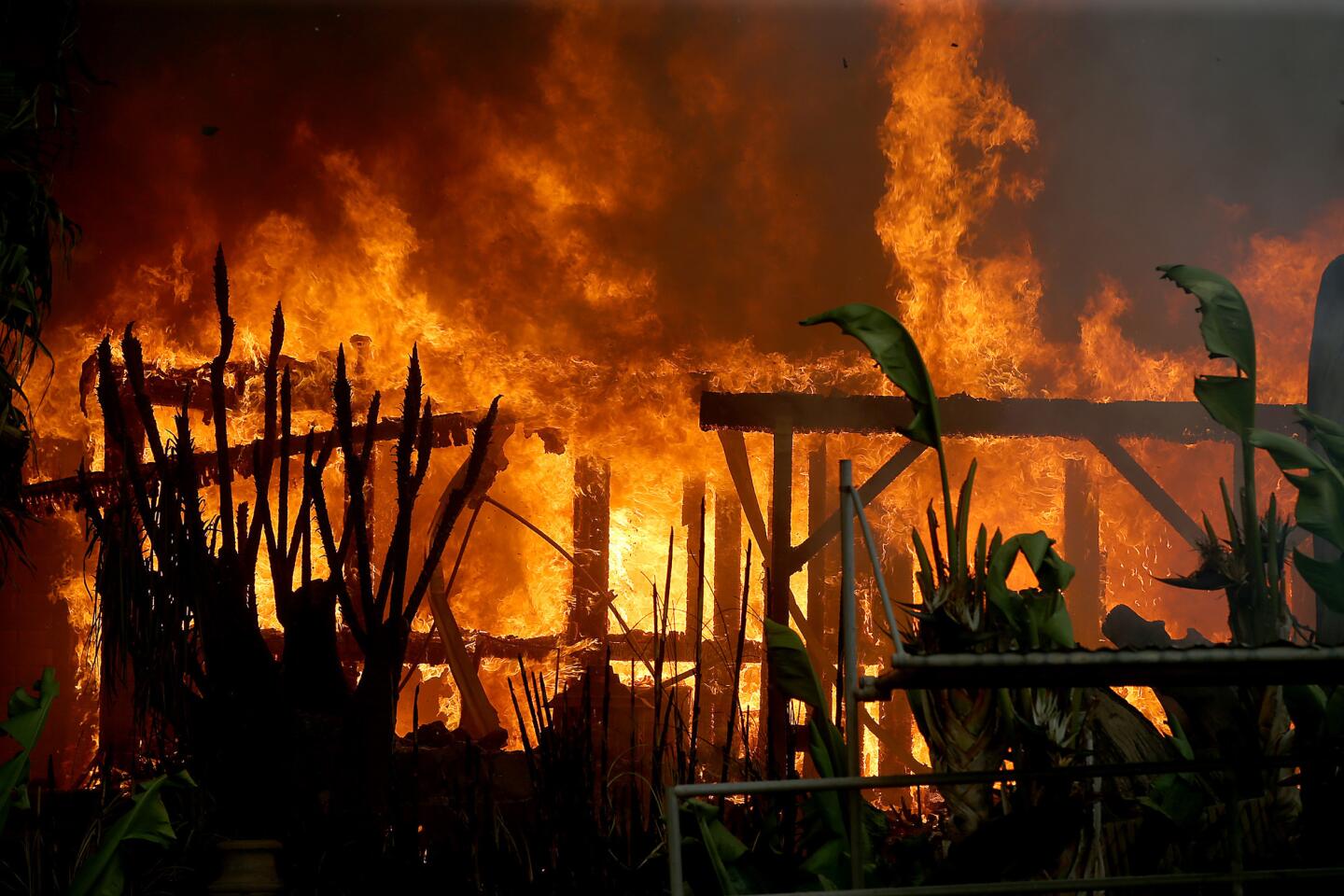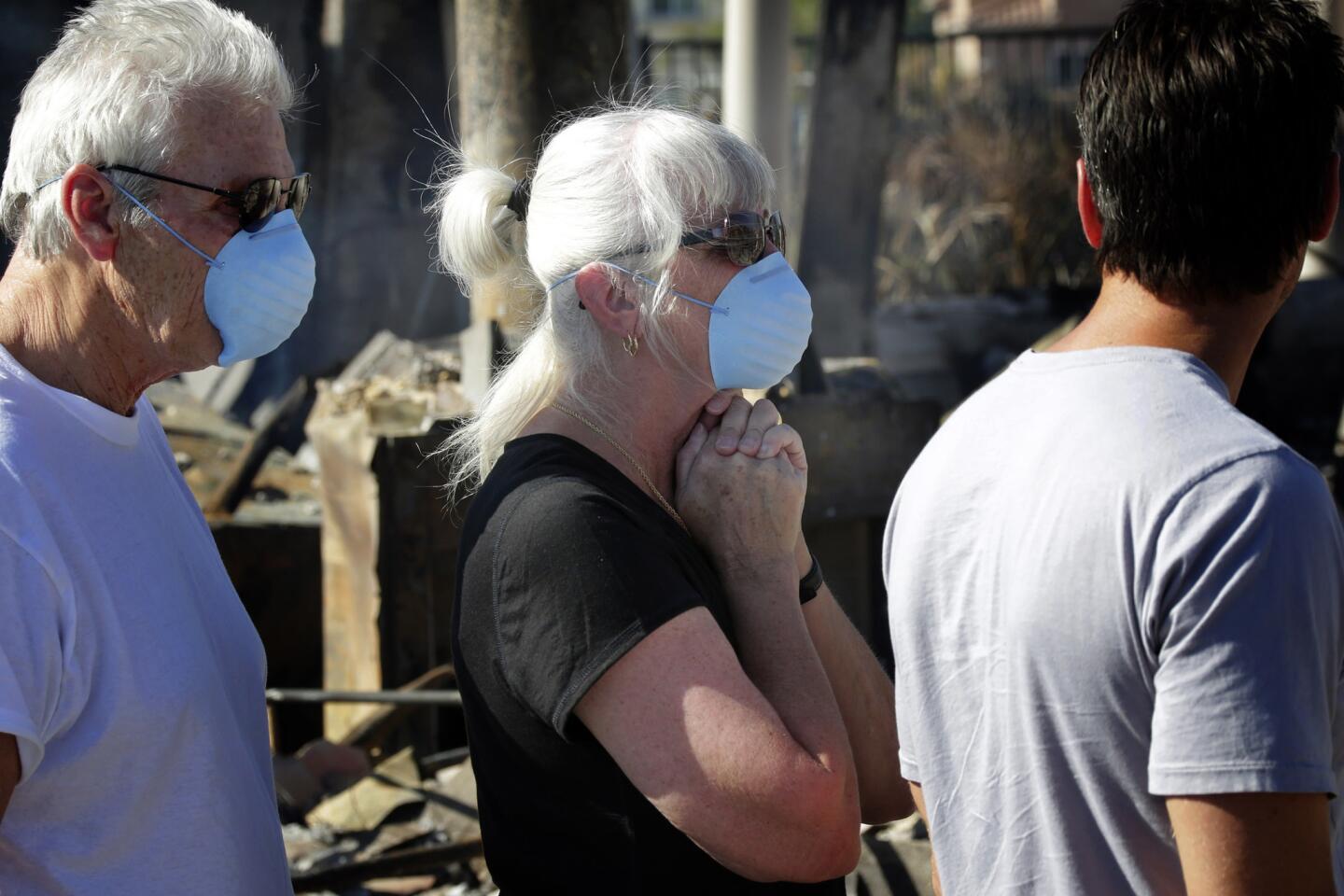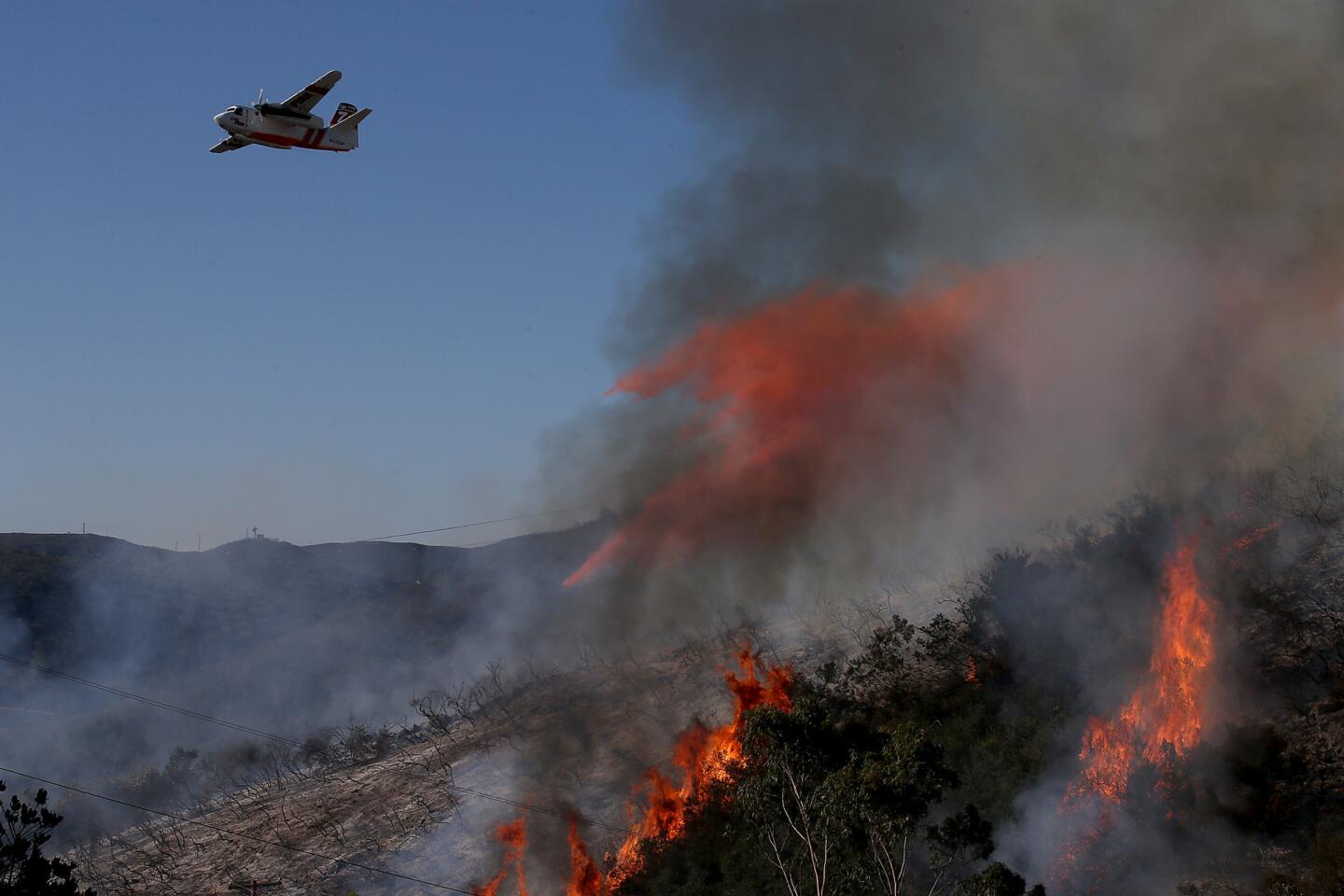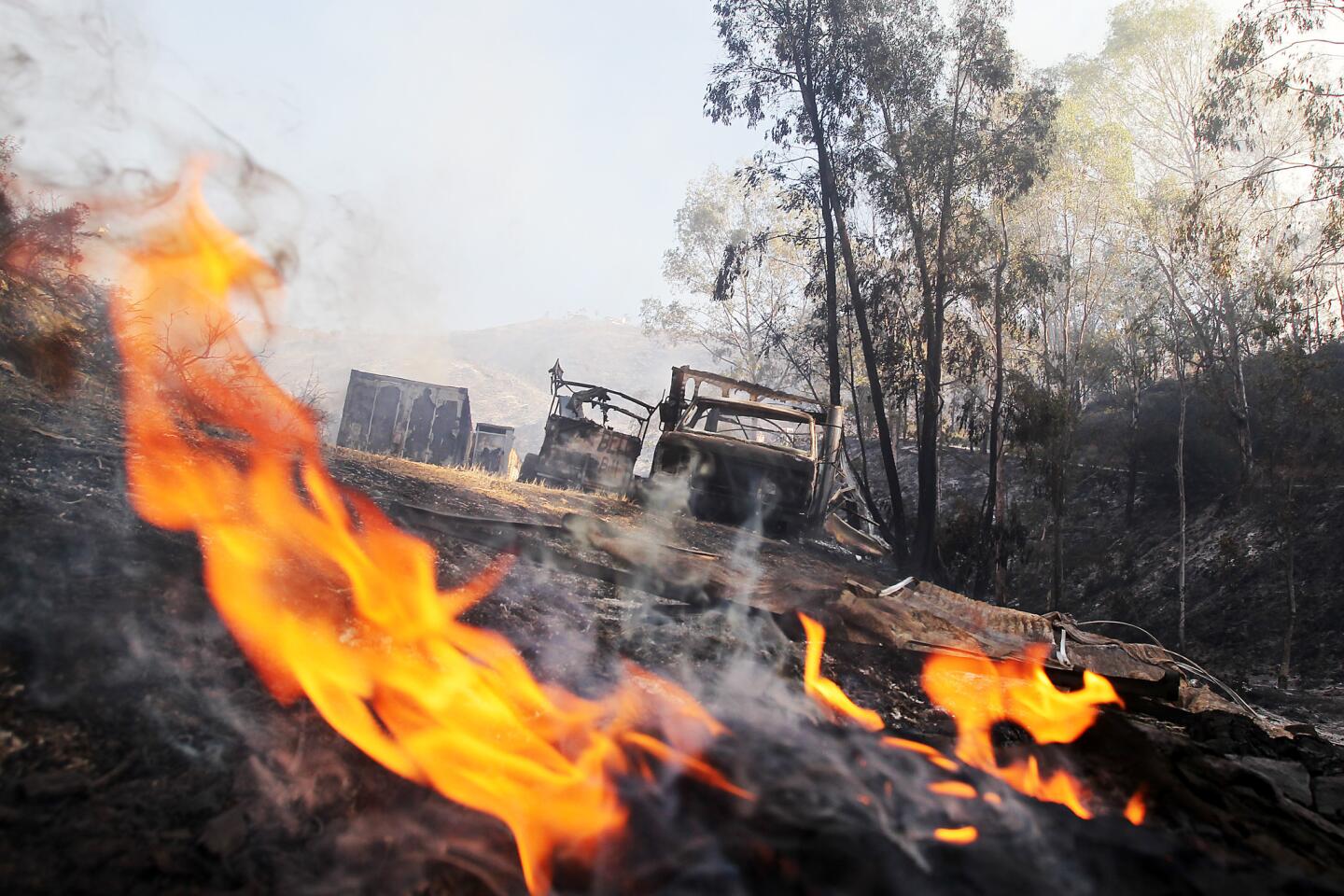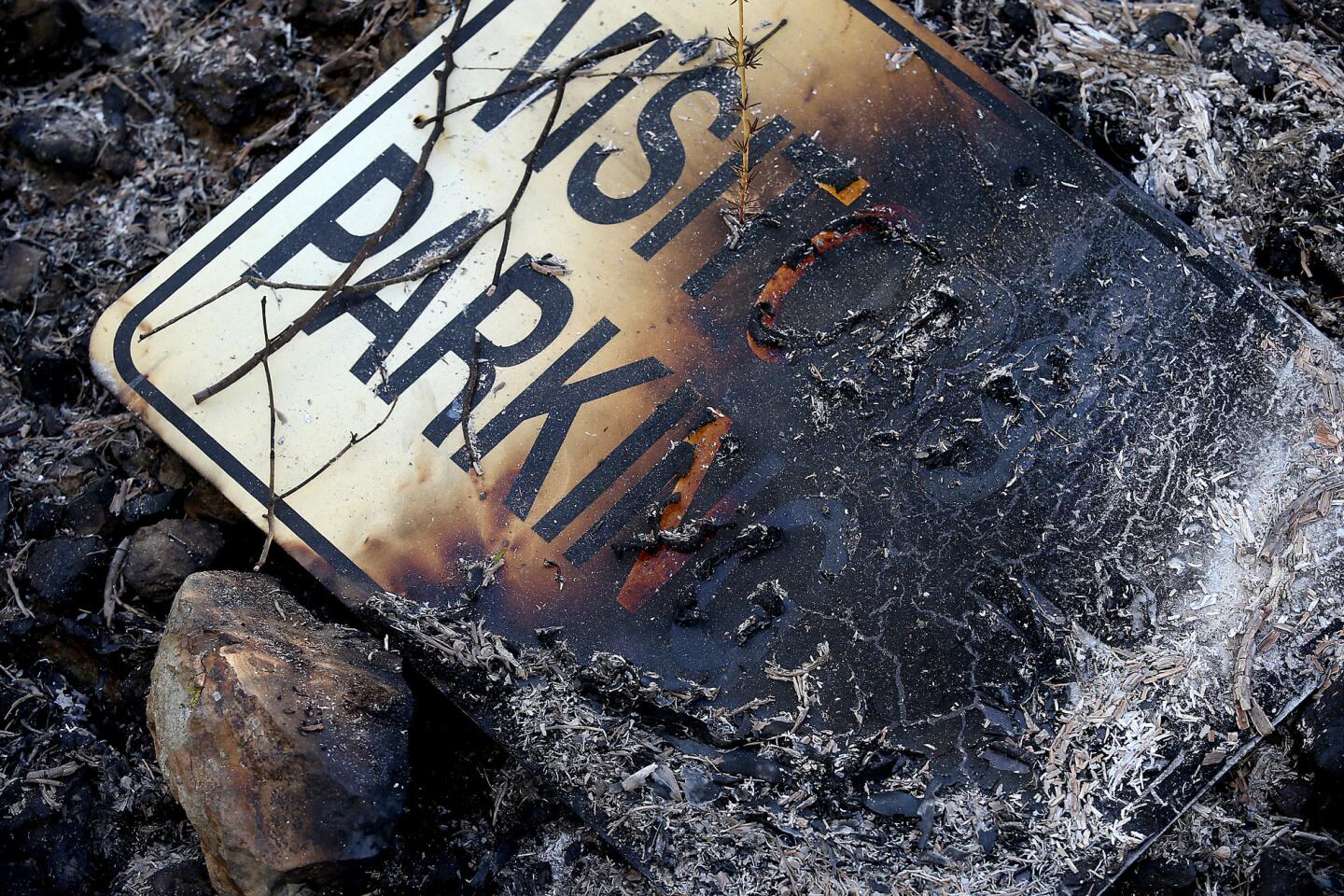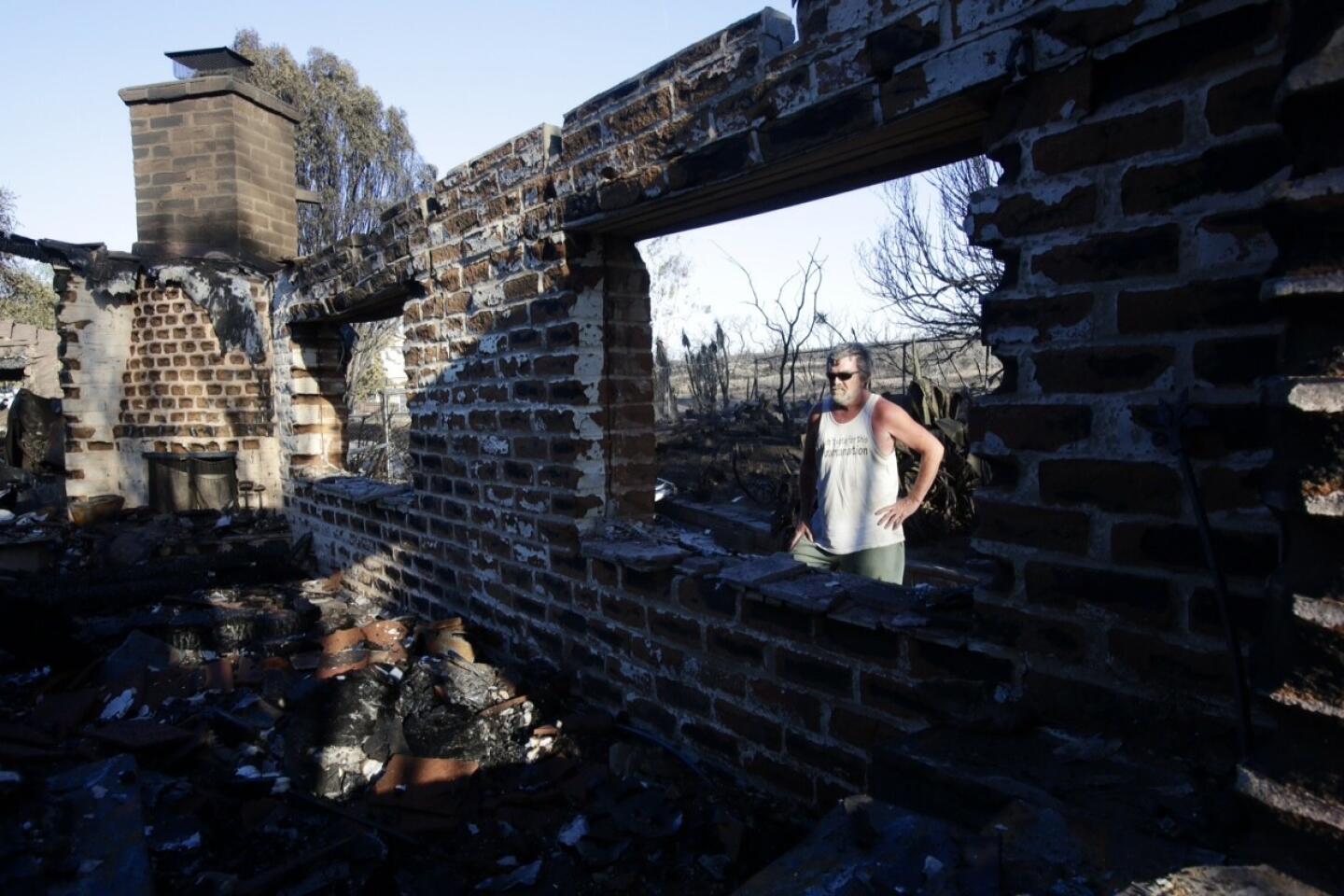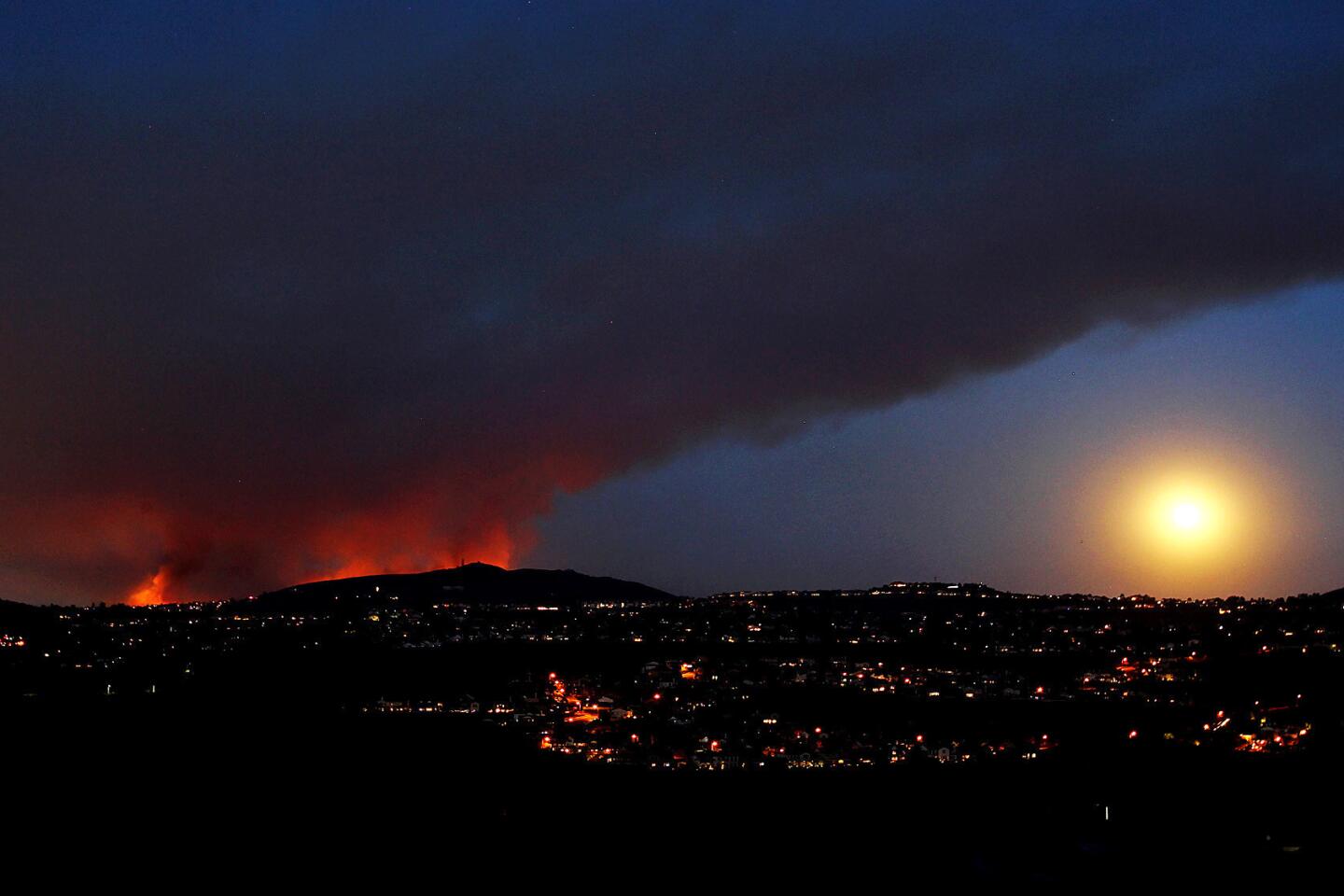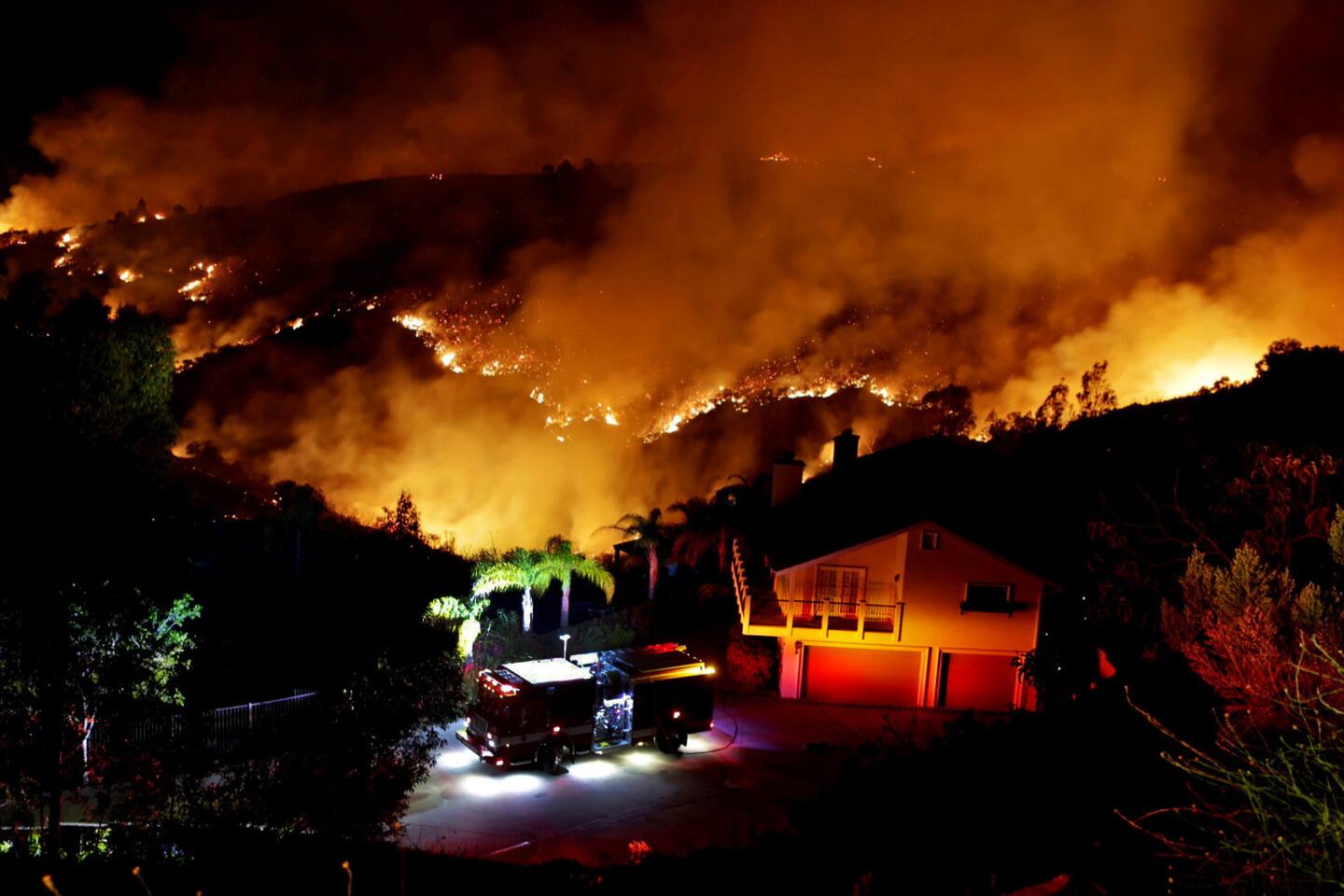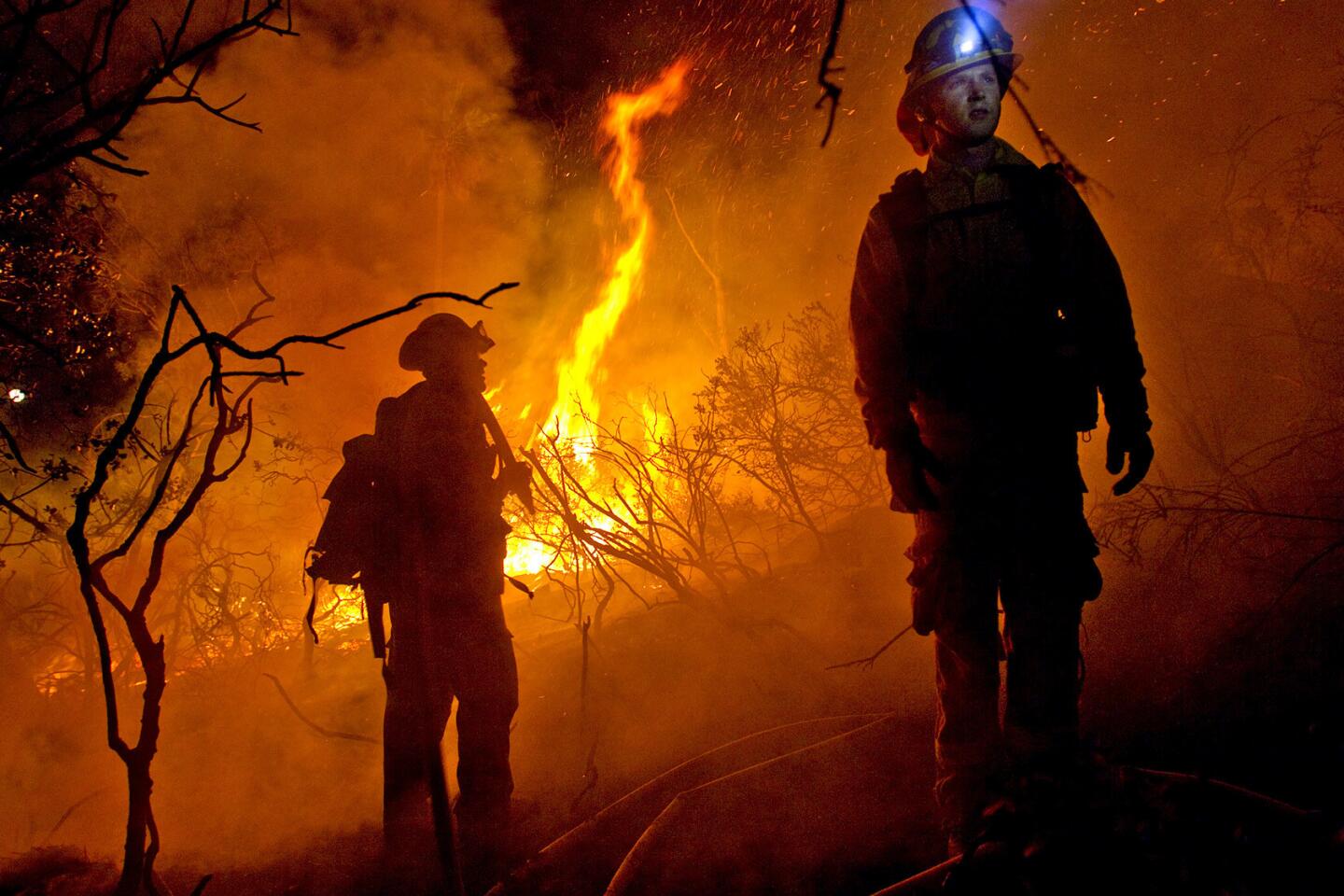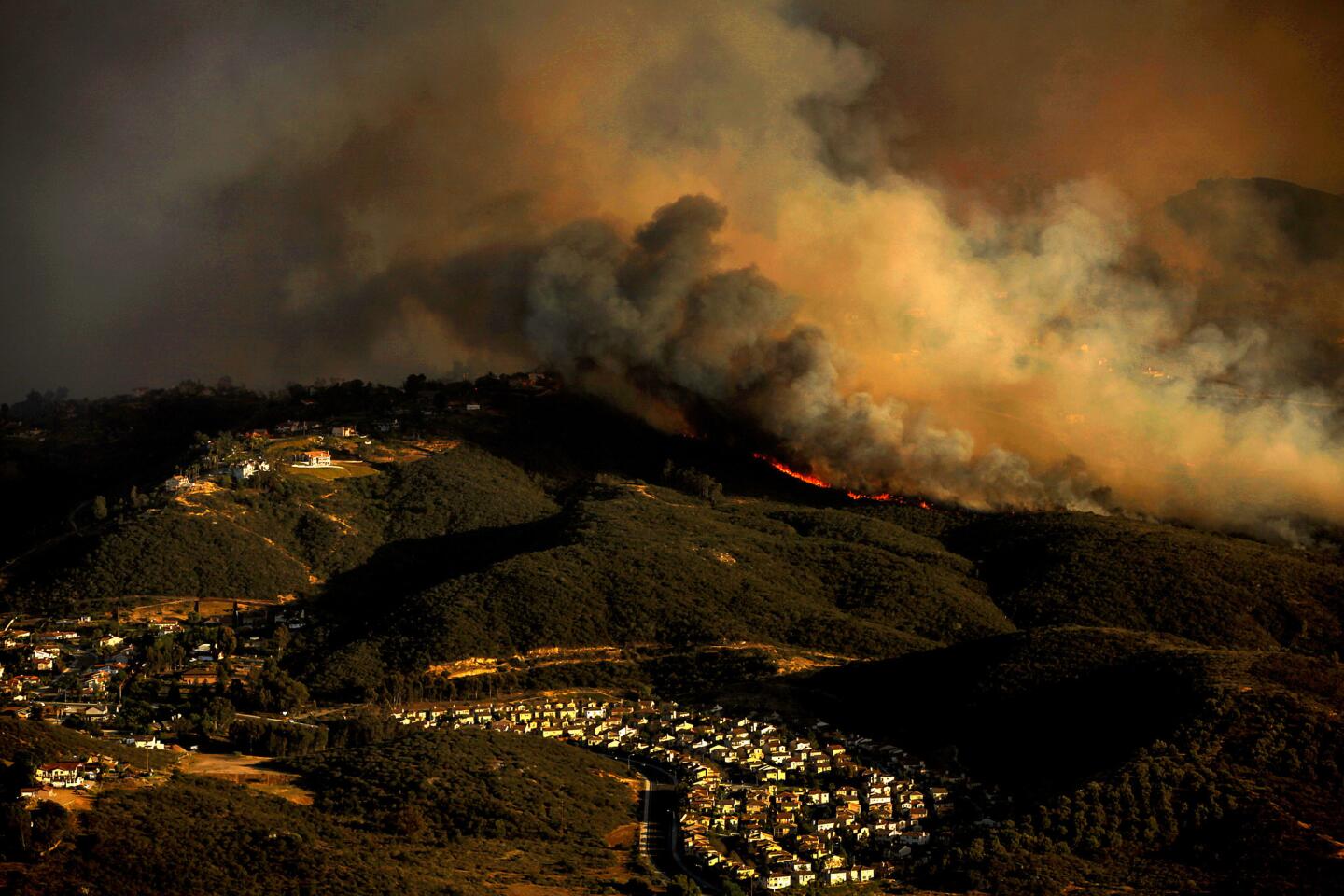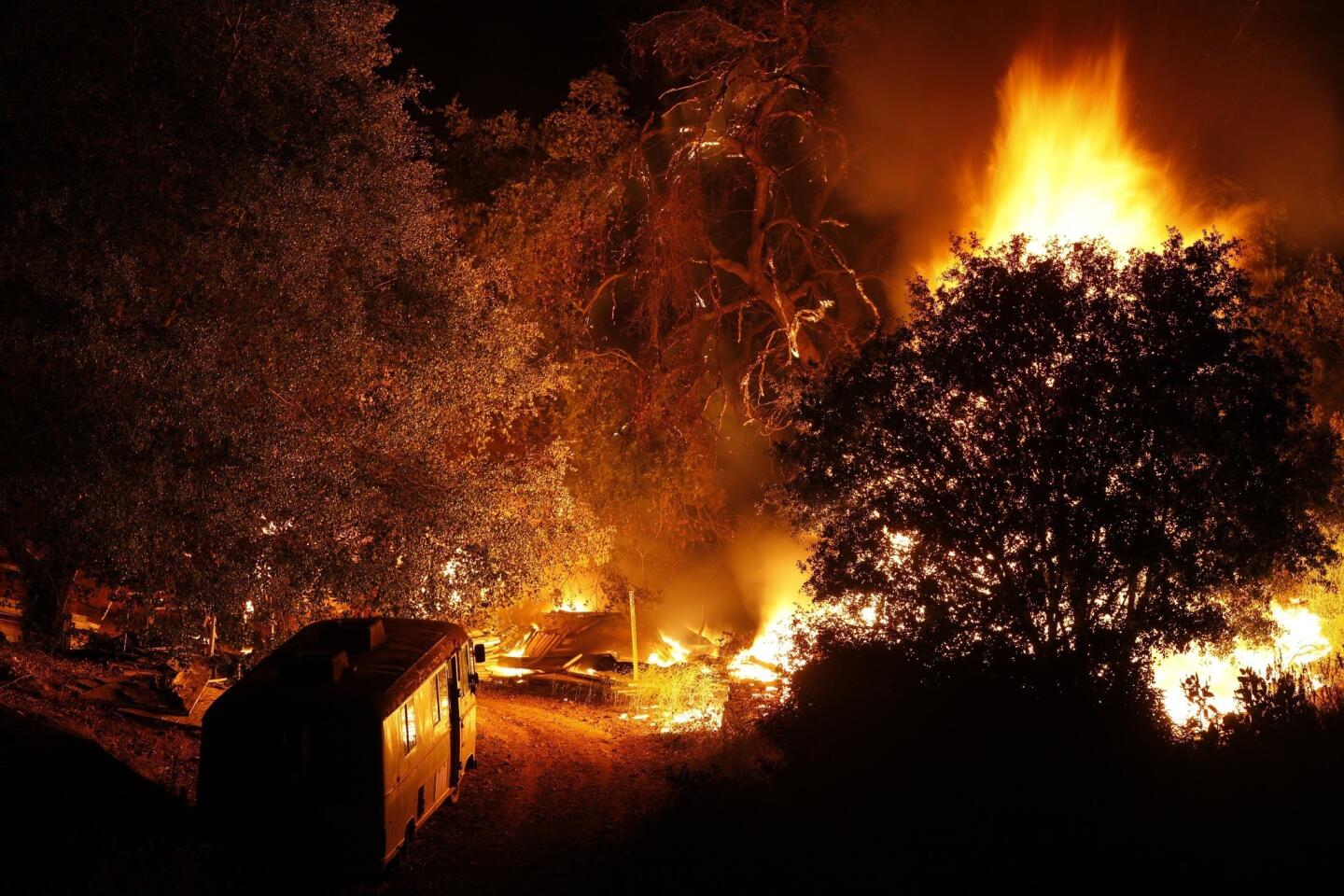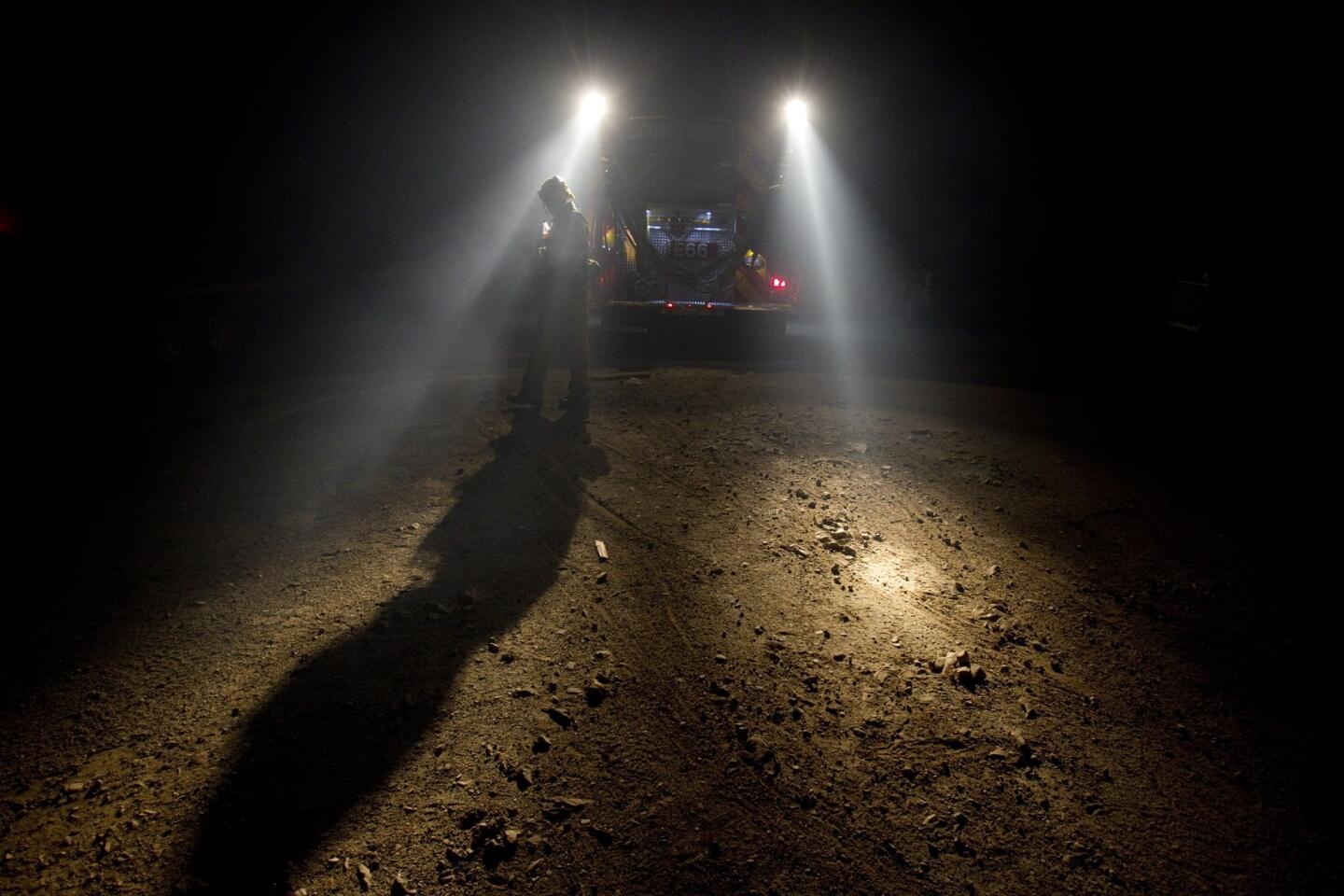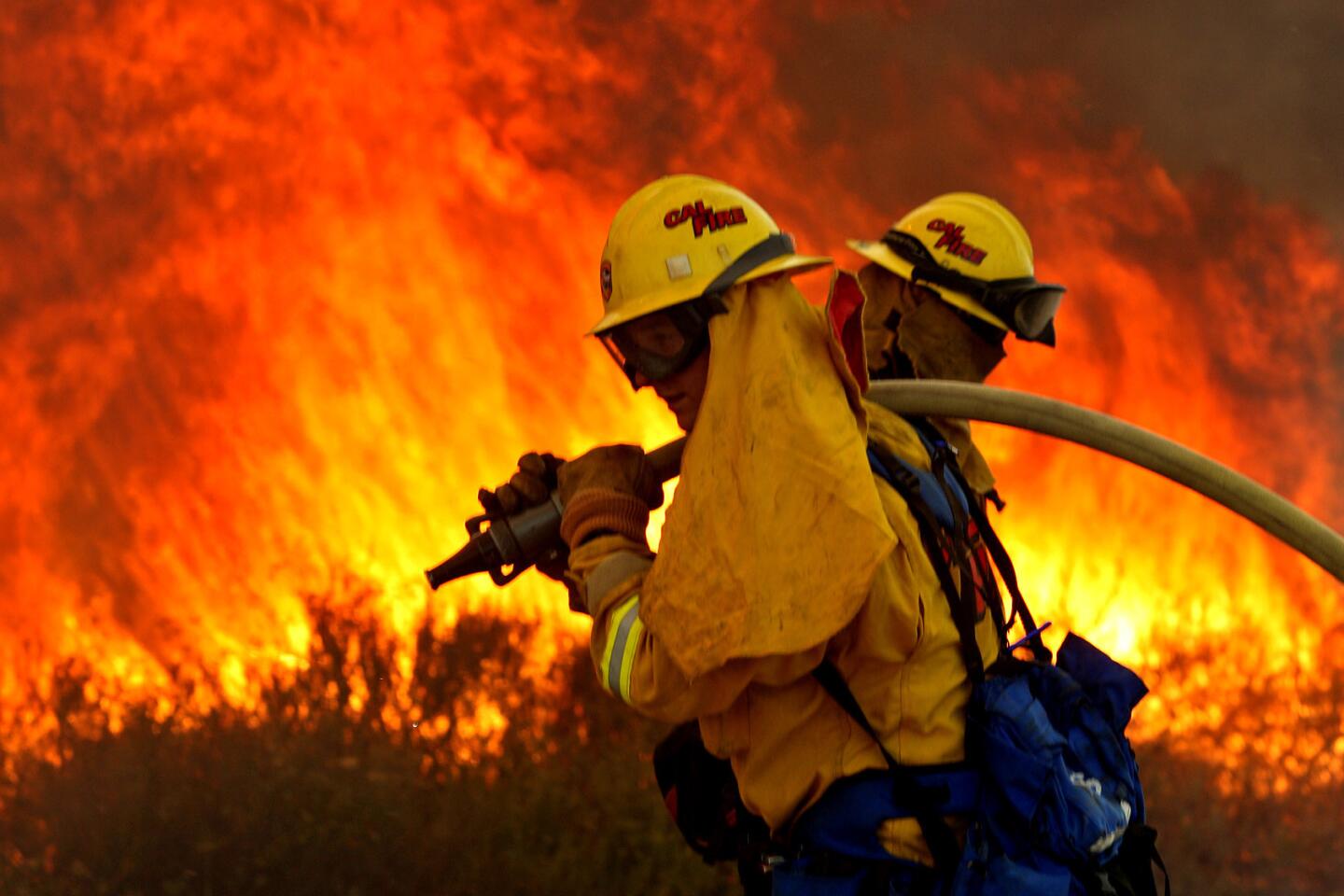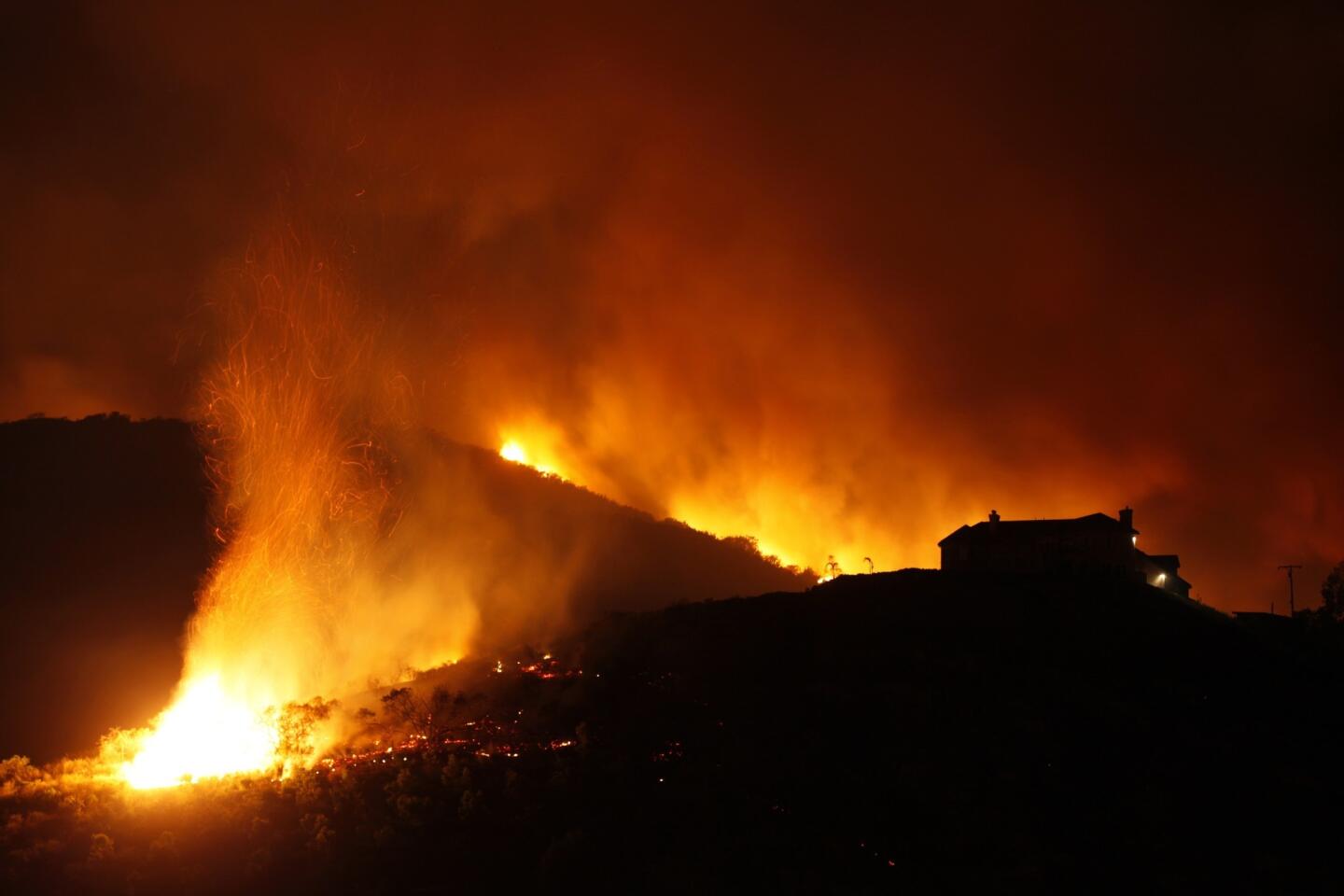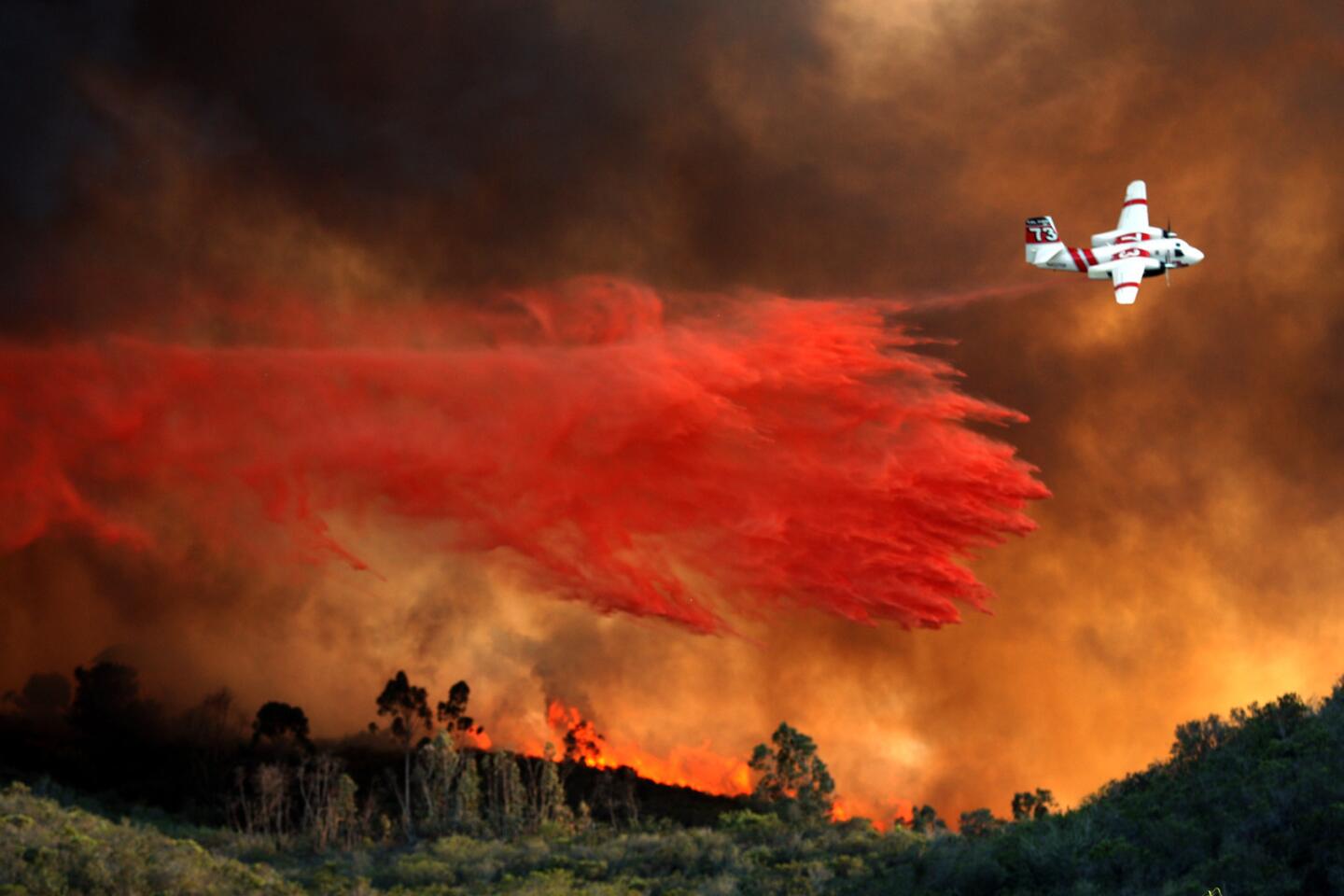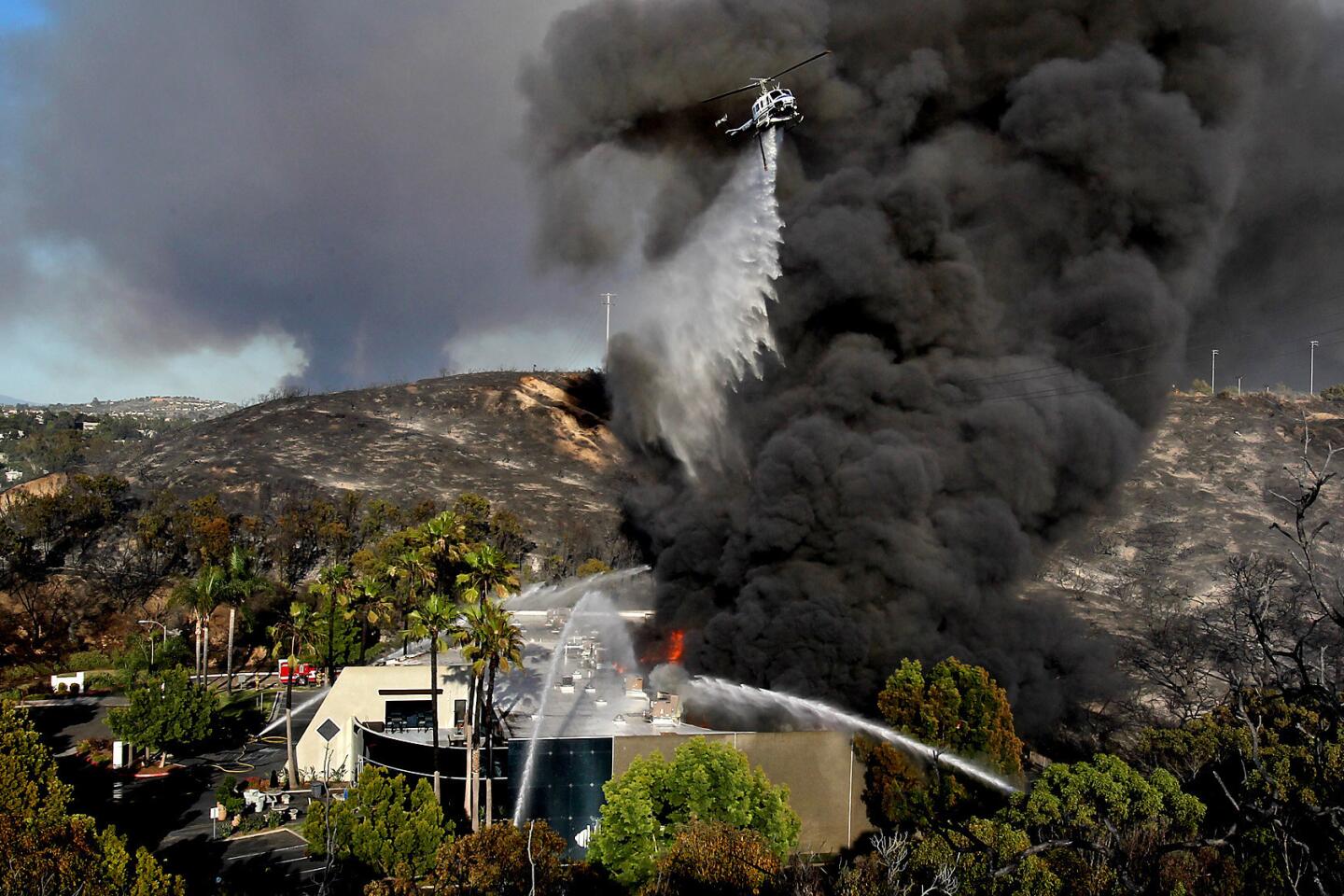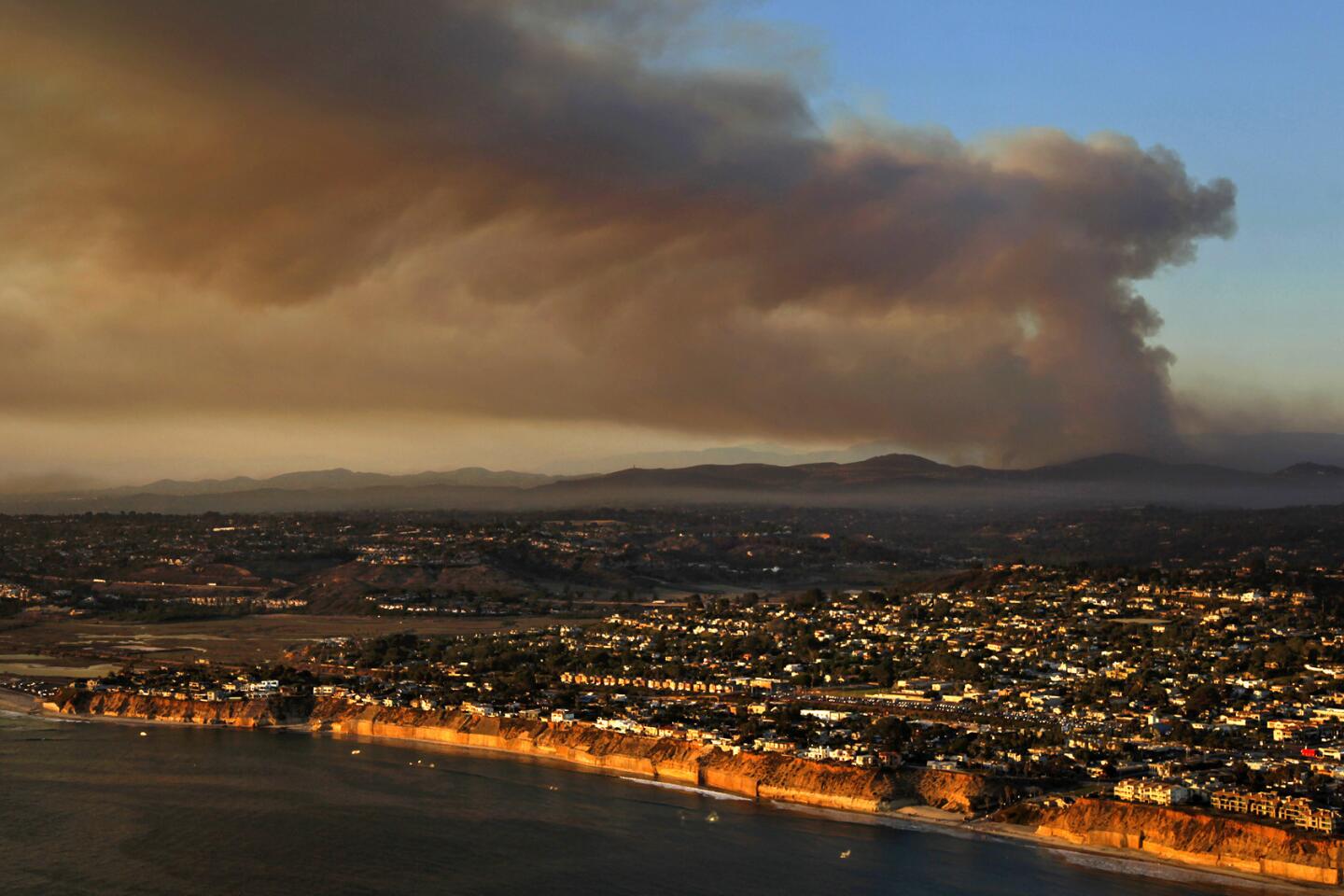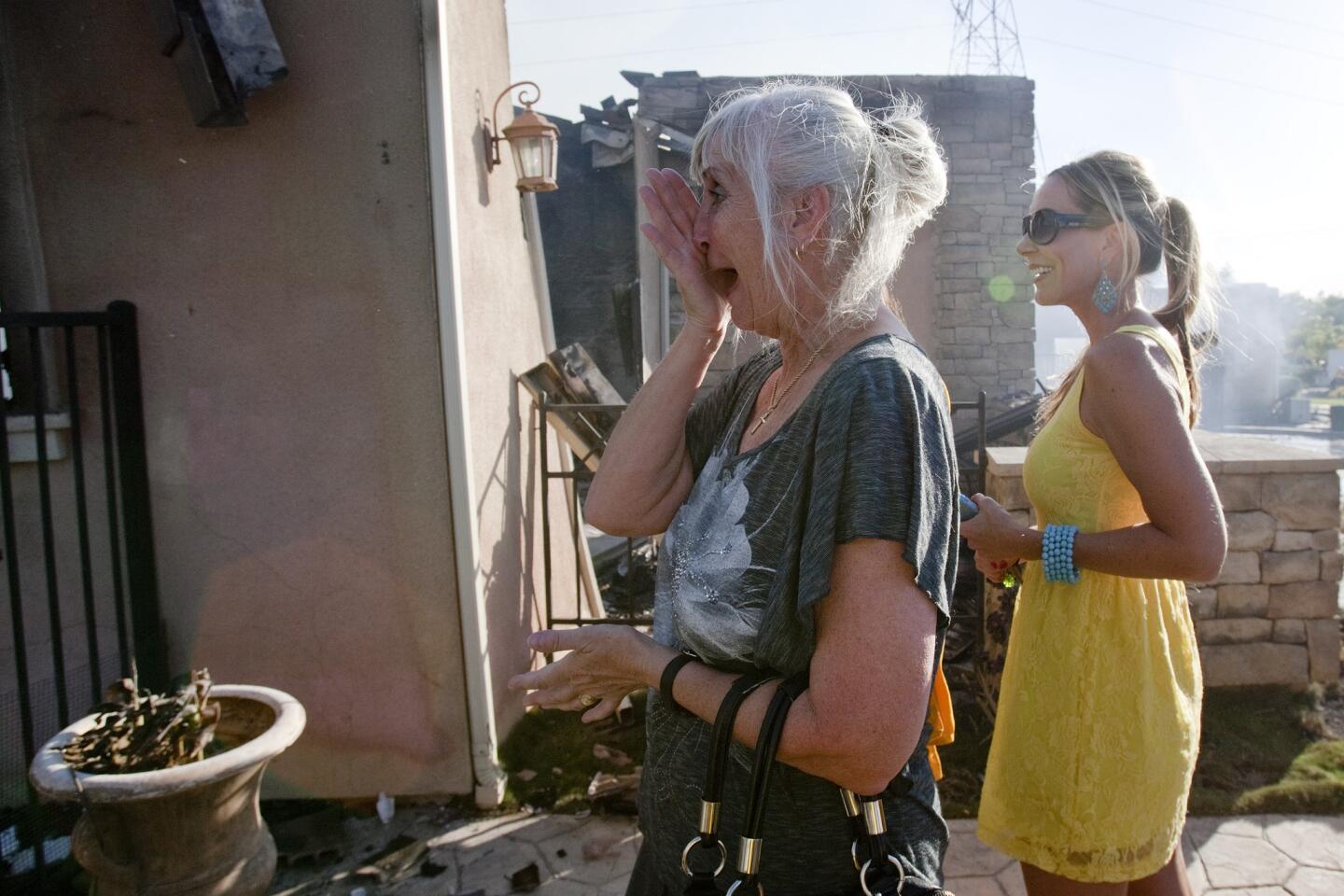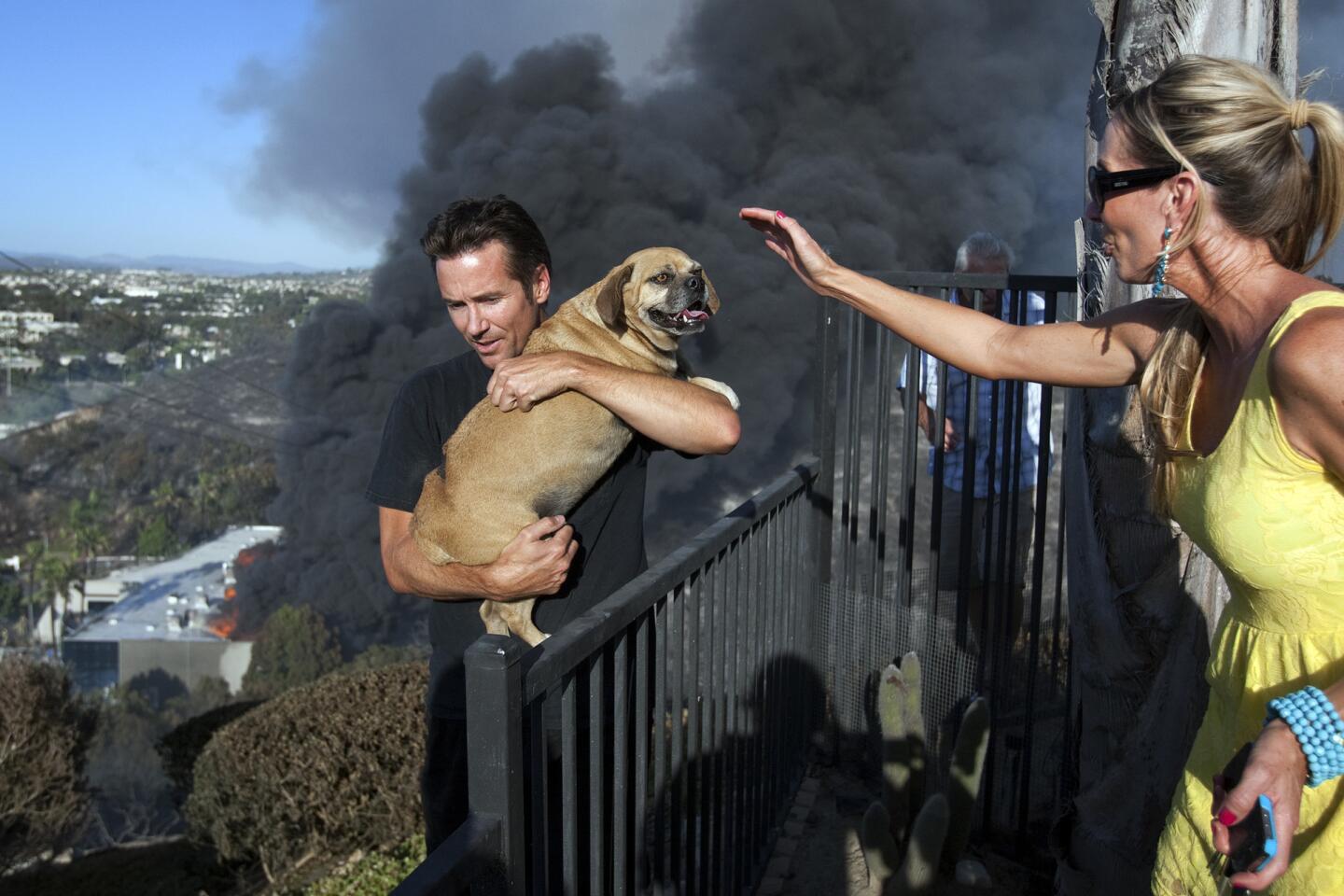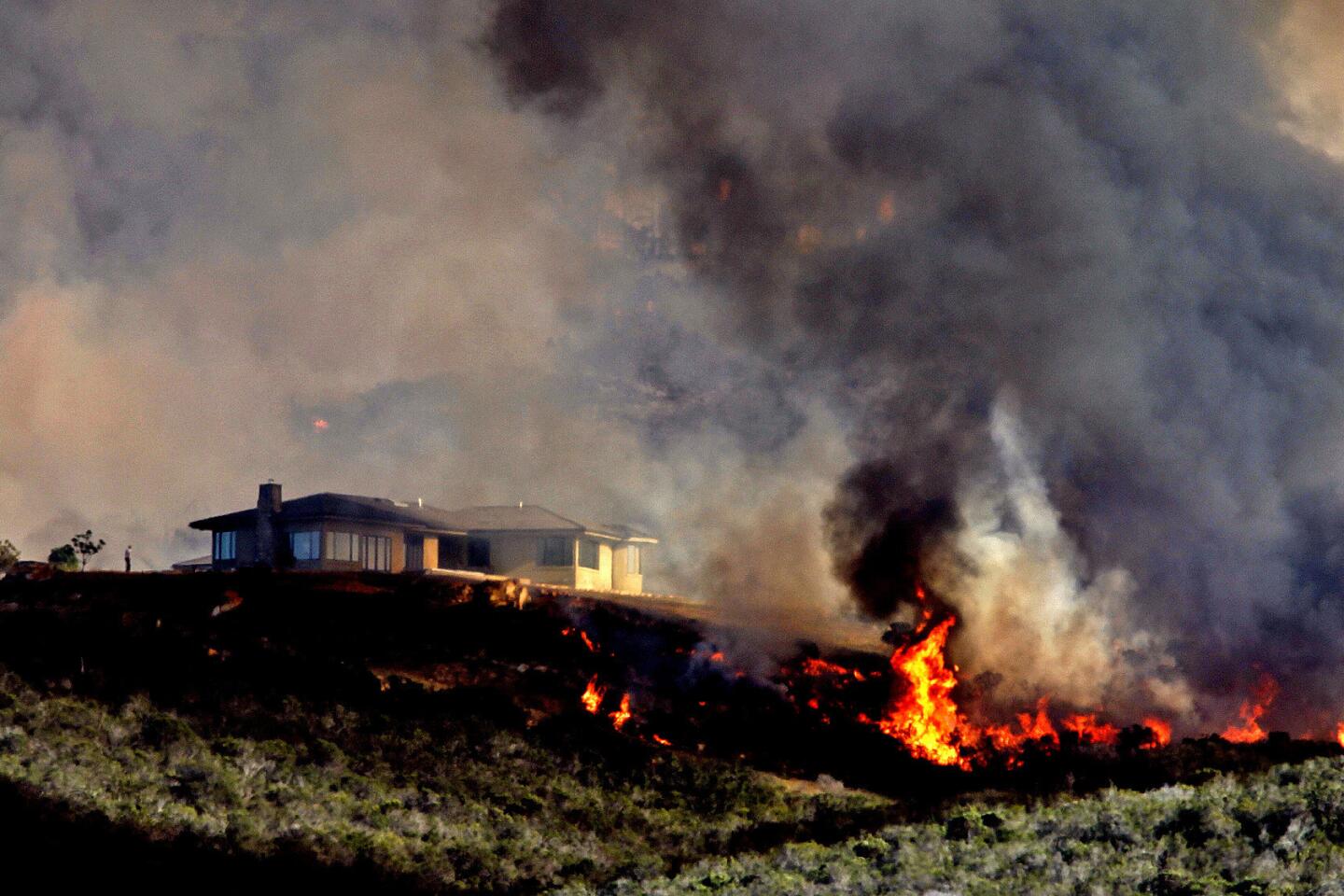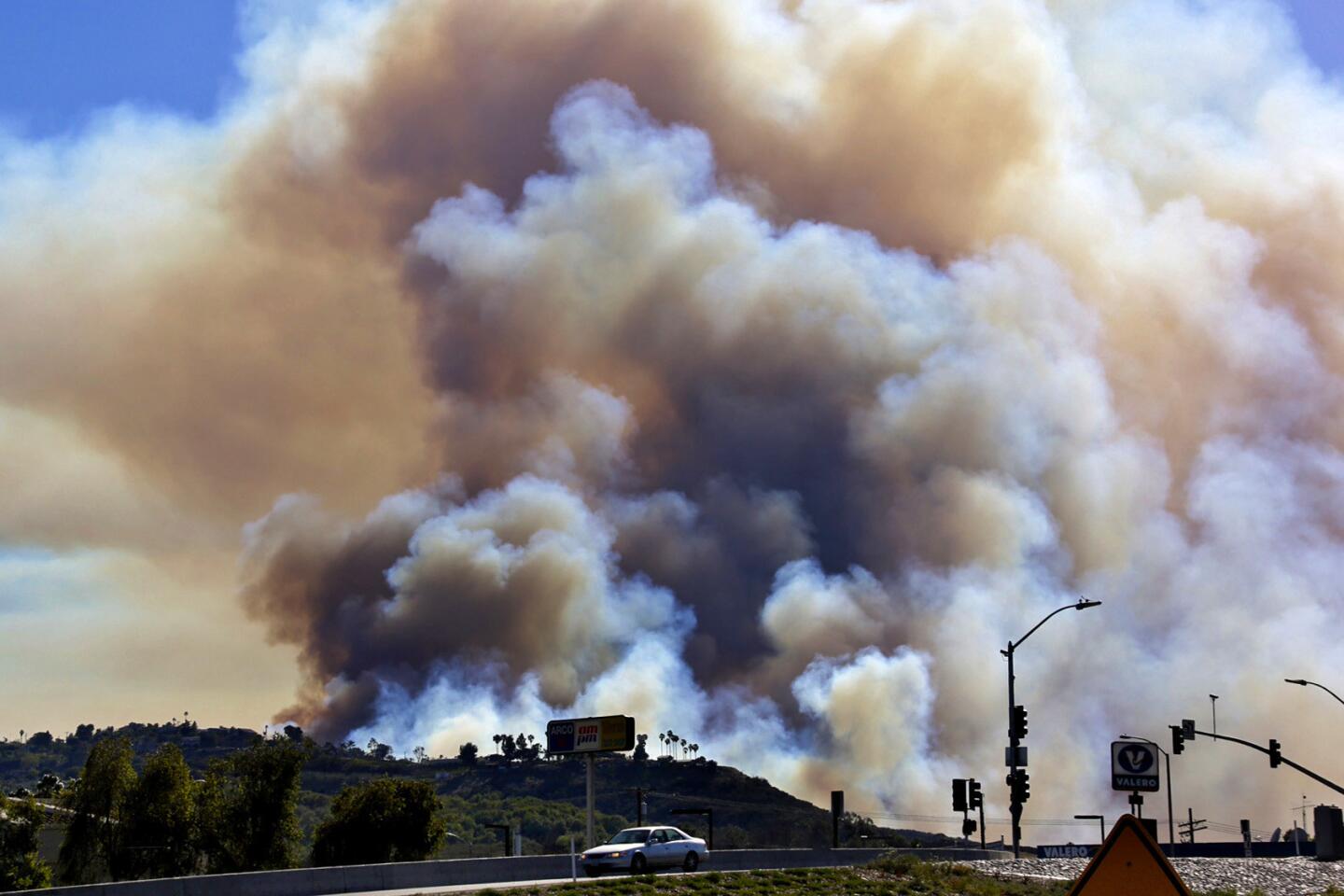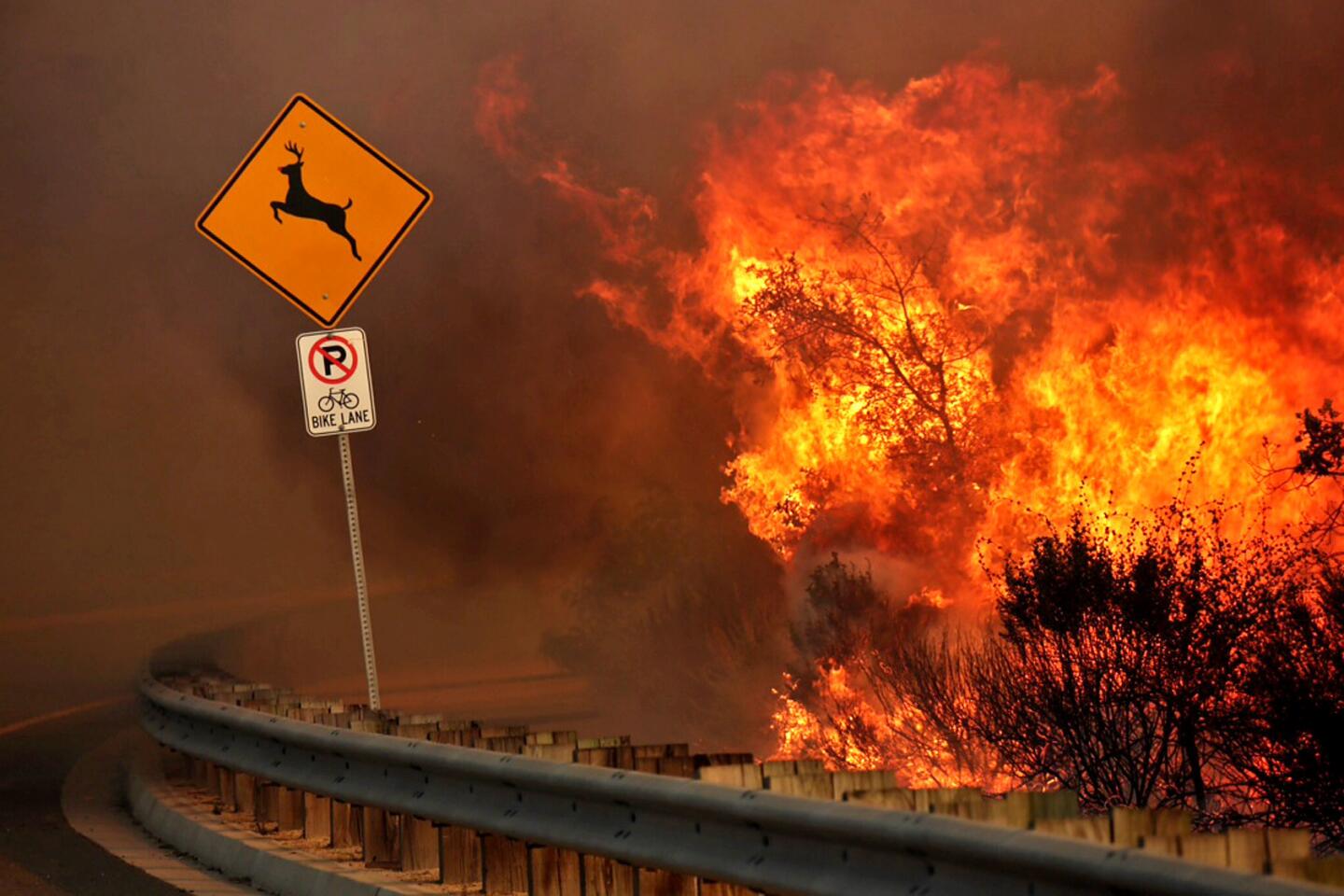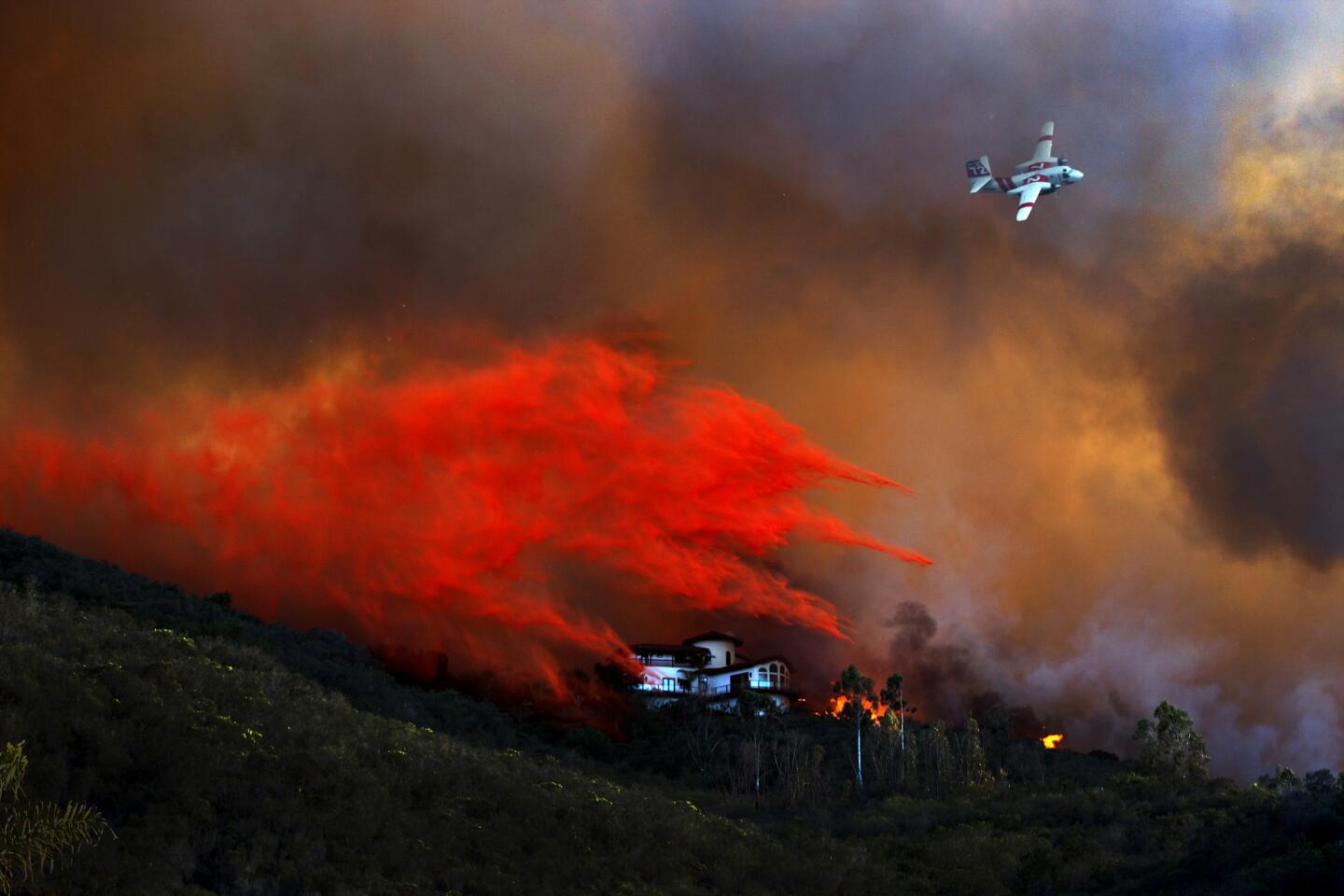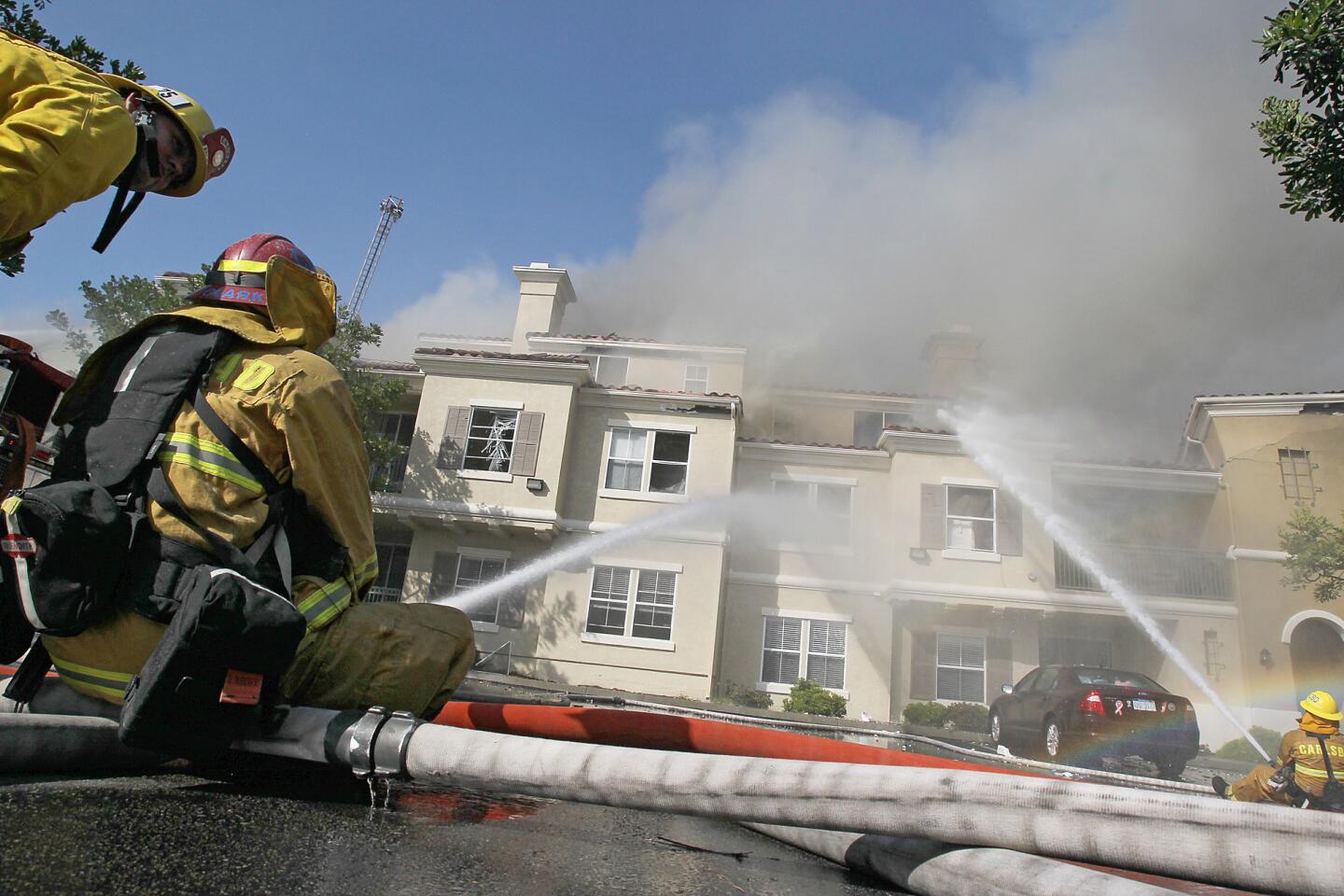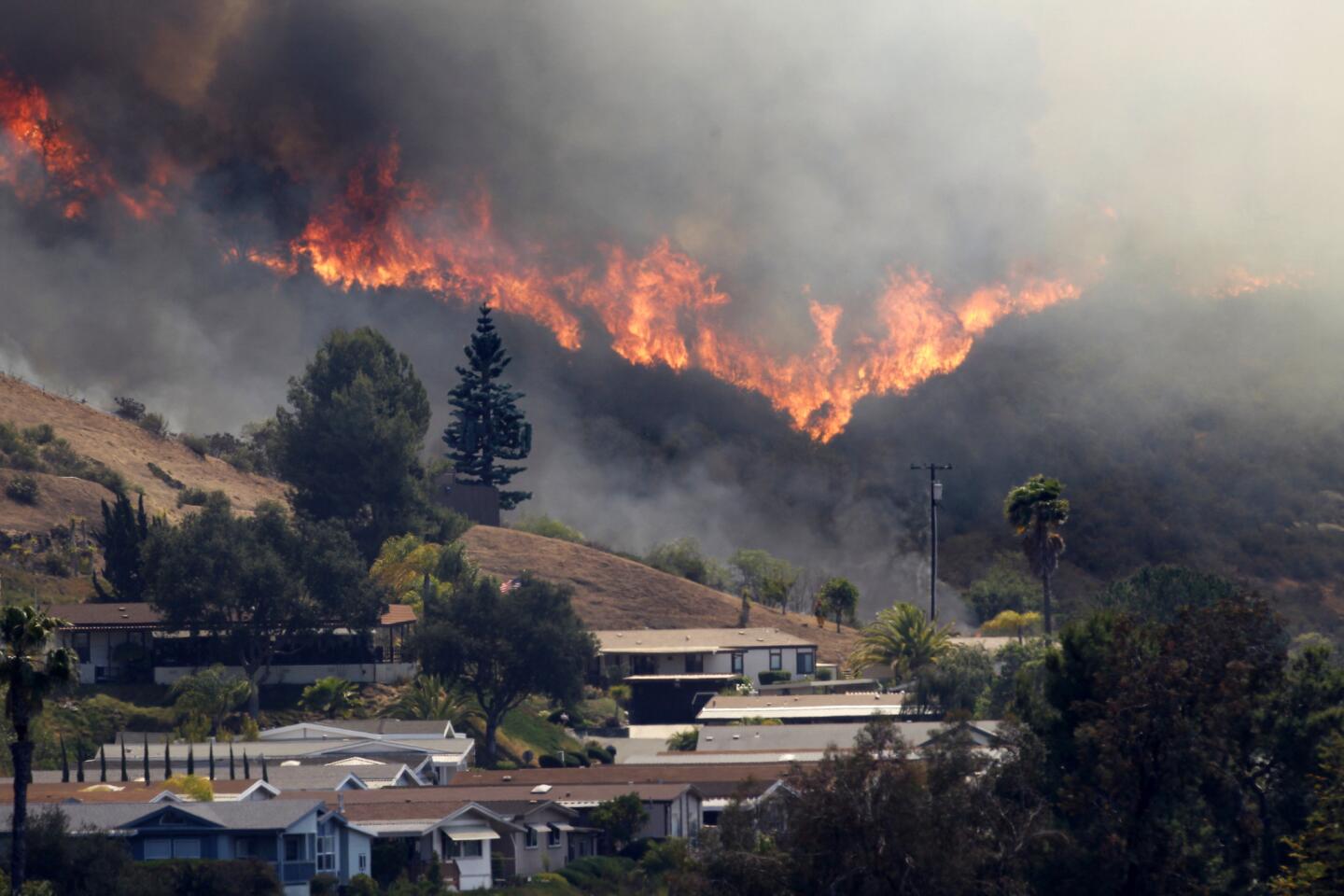San Diego County to mount more aggressive air attack on brush fires
- Share via
Reporting from San Diego — Hoping for calmer winds, firefighters in northern San Diego County on Thursday prepared to increase their assault on the ground and from the air on wild fires that have now burned more than 9,000 acres.
Much of the attention has shifted from the Poinsettia fire in Carlsbad to the Cocos fire in San Marcos -- the only fires believed to have caused structural damage.
“The Cocos fire is still active,” said Capt. Kendal Bortisser of the California Department of Forestry and Fire Protection.
In Carlsbad, officials said at a news briefing that 22 housing structures were destroyed: four single-family homes and an 18-unit apartment building, along with two commercial buildings. The loss was estimated at $22.5 million.
The Poinsettia fire is considered 60% contained and is no longer spreading toward homes.
“We literally saved hundreds of homes ... where fire was within inches of homes,” said Carlsbad Mayor Matt Hall, praising the work of firefighters.
But Carlsbad Fire Chief Michael Davis cautioned that if the wind were to pick up, crews may have to react to a new blaze at a moment’s notice.
“If we have a wind event, anything from the interior of that event blown into a green, brushy area has a high probability of ignition,” Davis said.
In San Marcos, the situation is less stable. Evacuations remain in place for a large area, including for Cal State San Marcos.
Three structures have been destroyed and one damaged as the fire is at 700 acres and growing, Cal Fire said.
Additional helicopters and fixed-wing craft are set to drop water and retardant on the Cocos fire and other blazes.
“The communities that are most threatened are getting the most resources,” said Davis.
Some nine fires, beginning with the Bernardo fire near Rancho Bernardo on Tuesday, have burned more than 9,000 acres, officials said.
The largest blaze is the 6,000-acre brushfire at the Naval Weapons Station Fallbrook adjacent to Camp Pendleton. The fire has forced evacuations and shut down the station’s operation, but has not caused structural damage or imperiled the adjacent civilian community, Marine officials said.
Although no evidence exists to suggest any of the fires were the result of arson, San Diego County Dist. Atty. Bonnie Dumanis said investigators will be probing to determine the causes of the blazes.
Some 22 military helicopters will be part of Thursday’s attack, up from 10 on Wednesday, said county Supervisor Dianne Jacob.
There will also be additional Cal Fire air tankers, including a mammoth DC-10, which is expected to resume drops on the Cocos fire at about 8 a.m.
San Diego County Sheriff Bill Gore said he is “cautiously optimistic” that if the weather improves, “hopefully we’ll see San Diego County get back to the beautiful place we like to live in in a couple of days.”
Although high temperatures are expected for a third straight day, the wind pattern that brought Santa Ana winds appears to be easing, weather forecasters said.
Some 29 school districts, meanwhile, have closed for Thursday. Numerous roads are closed to aid first responders or prevent people from wandering into dangerous areas.
Northern San Diego County has been the site of some of the state’s most disastrous brush fires. Memories of those fires remain with many residents, along with a determination to persevere, officials said.
“Carlsbad has had many devastating events,” said Davis, “and there’s one thing I know to be true about this community – it always comes together and folks here are always here to help each other out.”
In other parts of the state, flames ravaged 29 acres near Santa Paula in Ventura County on Wednesday, but firefighters appeared to have mostly contained the fire.
Firefighters were also able get a handle on 600-acre fire that prompted evacuation orders in Lompoc. That blaze was estimated to cost $225,000, and its cause is under investigation, according to the Santa Barbara County’s Office of Emergency Management.
Perry reported from San Diego, Serna and Rocha from Los Angeles.
More to Read
Sign up for Essential California
The most important California stories and recommendations in your inbox every morning.
You may occasionally receive promotional content from the Los Angeles Times.

